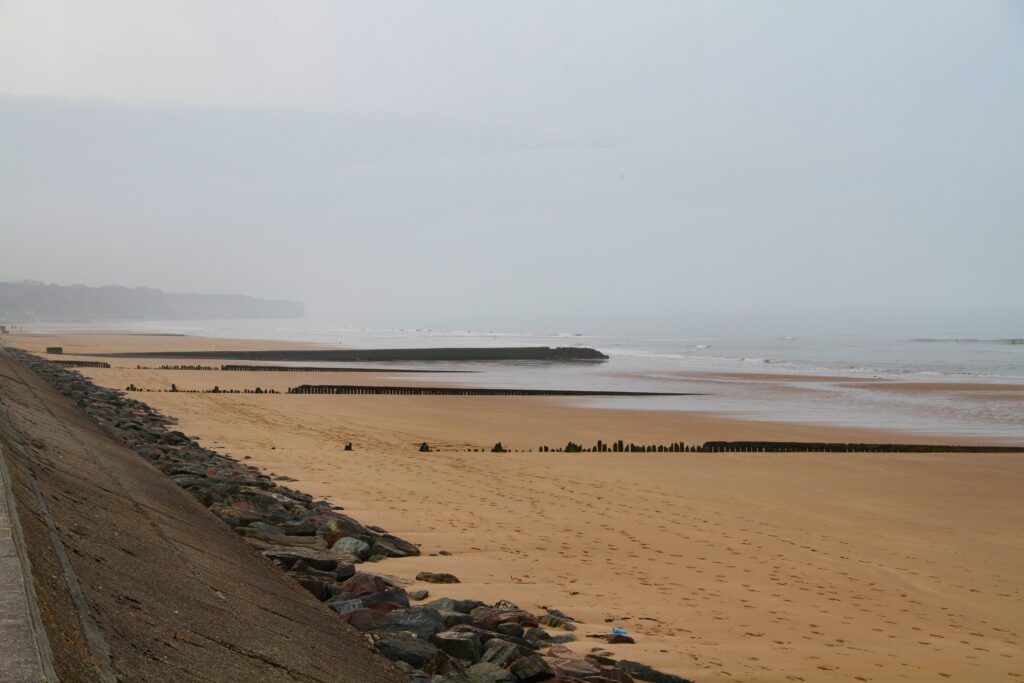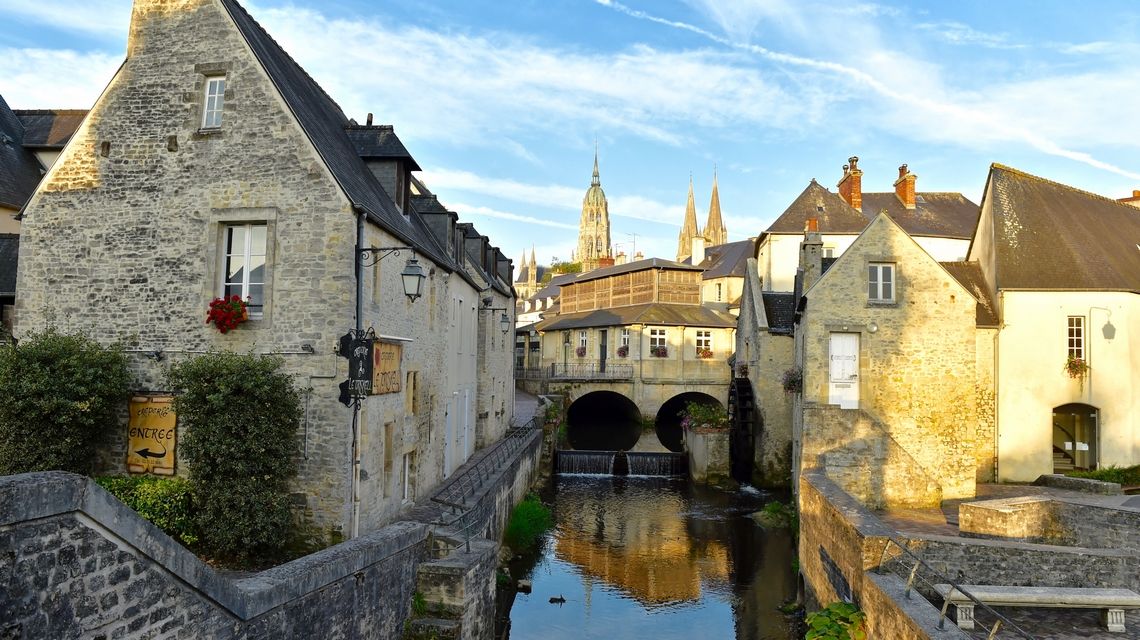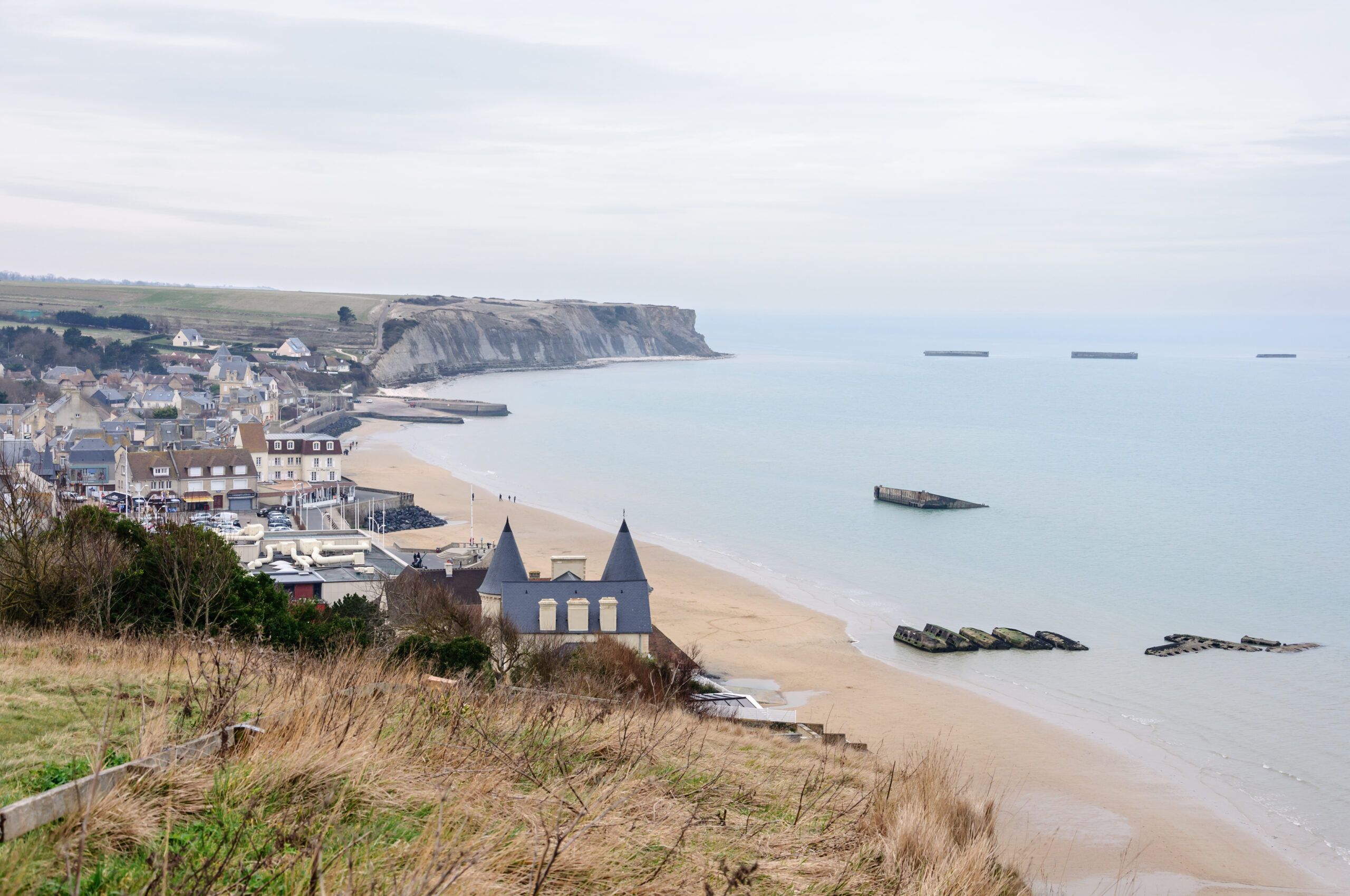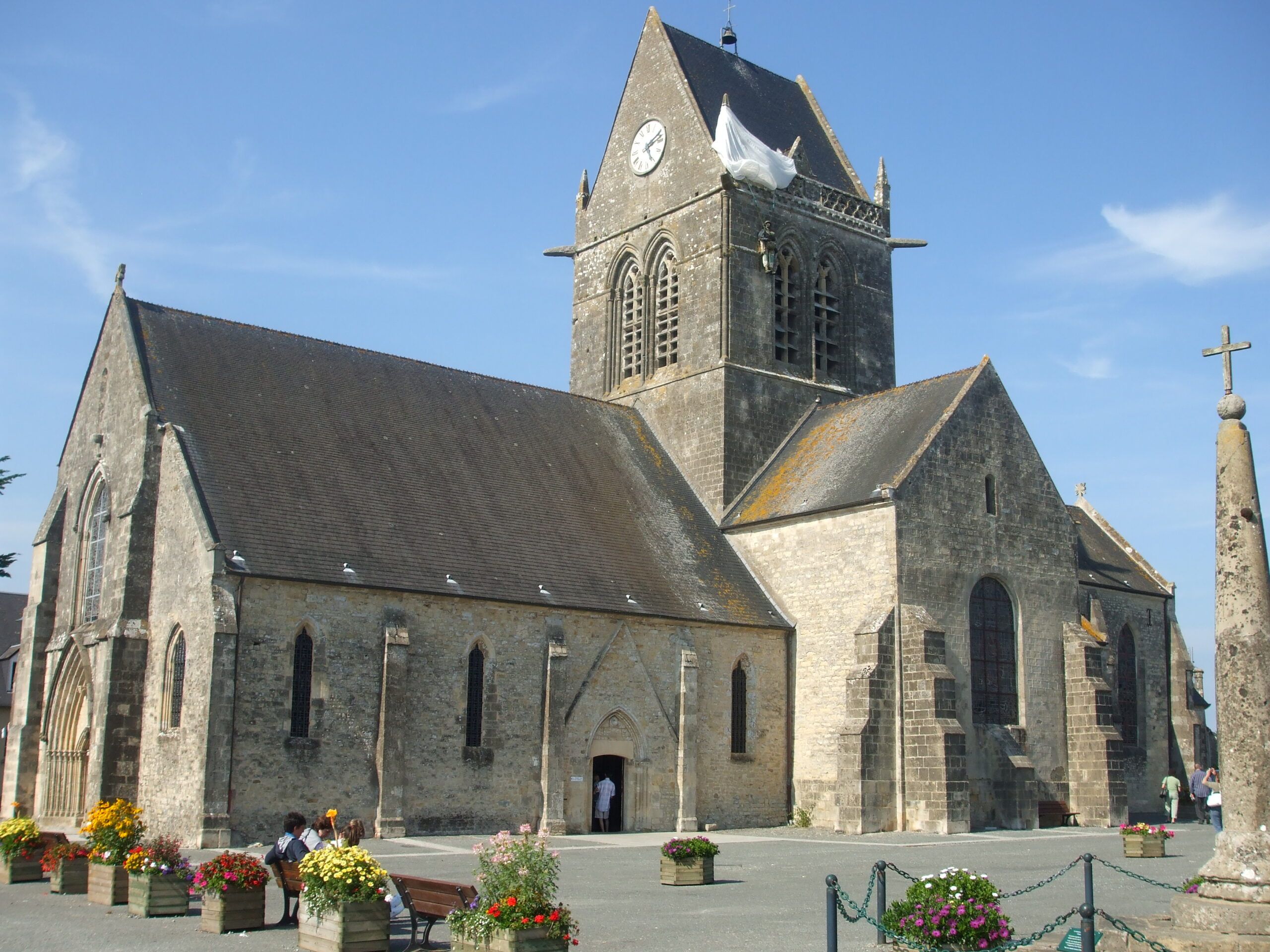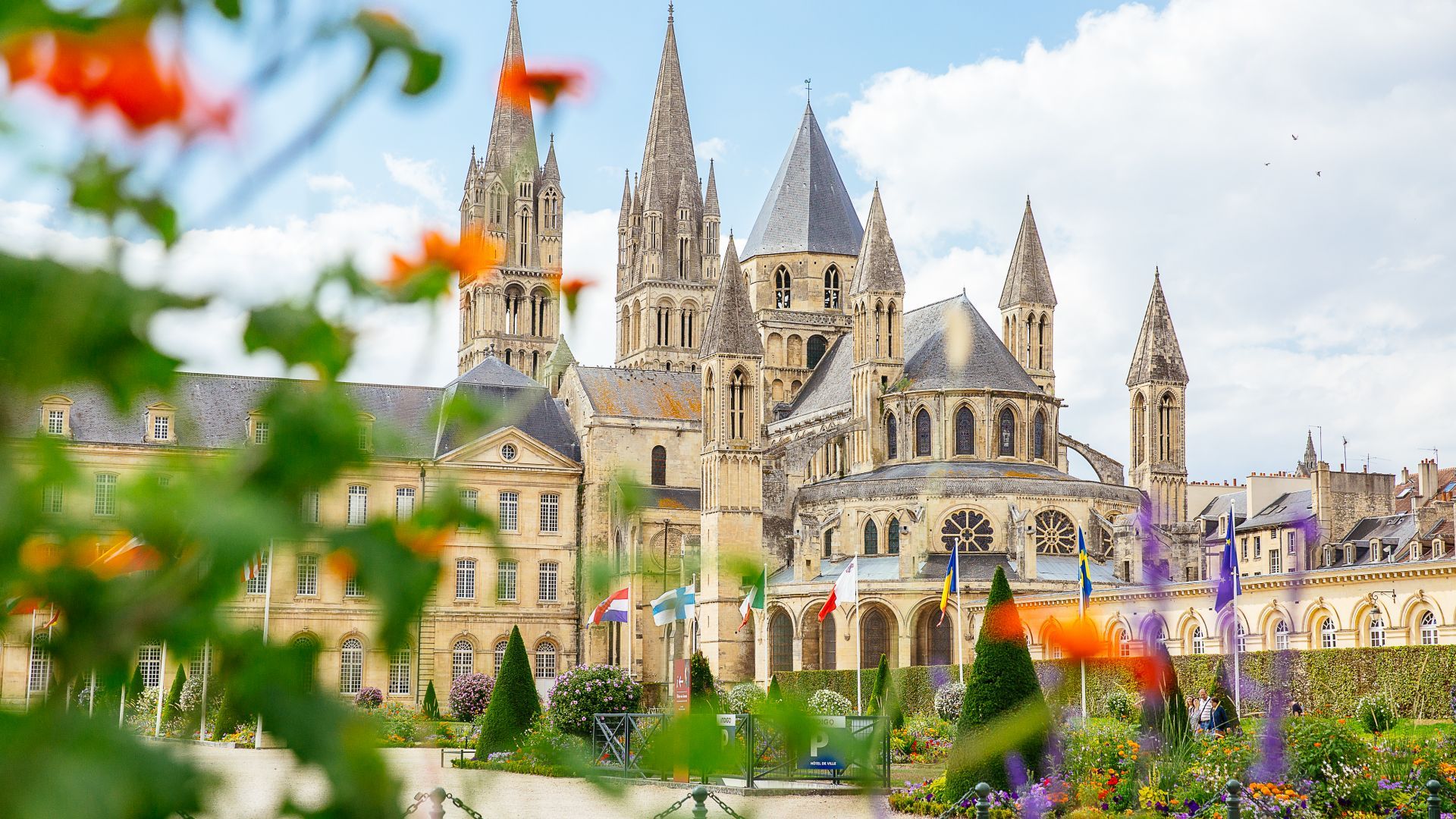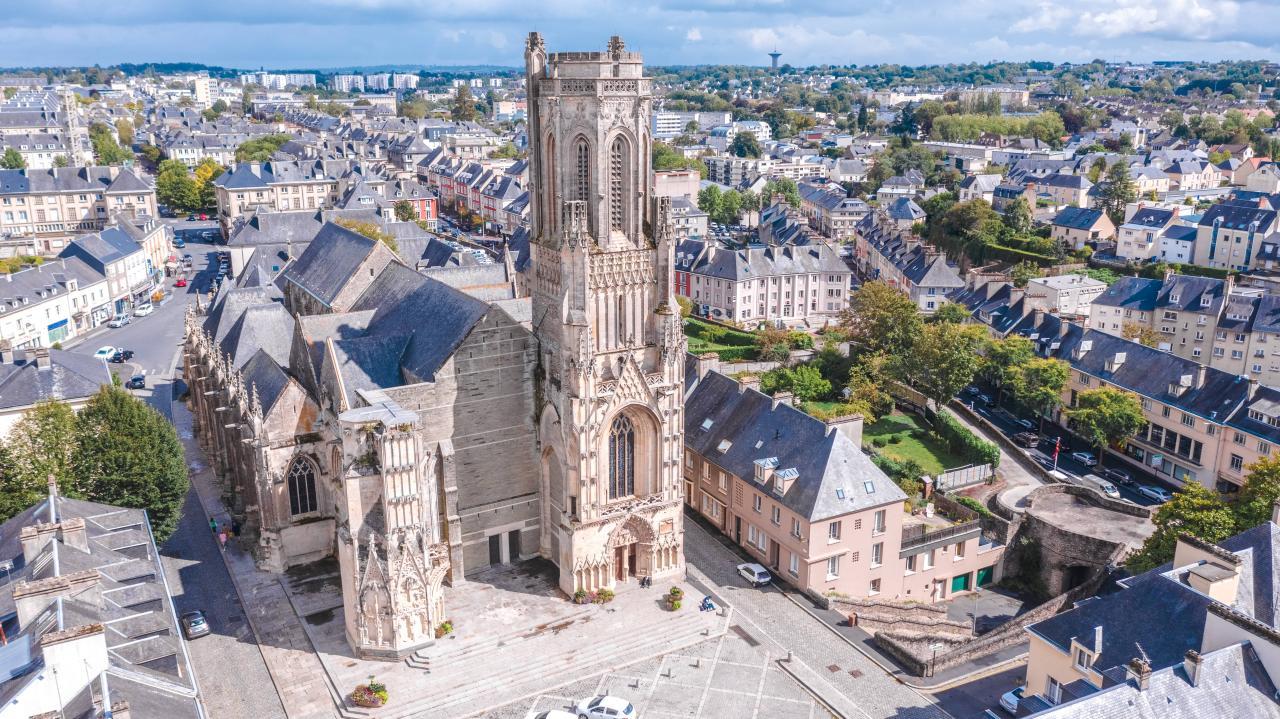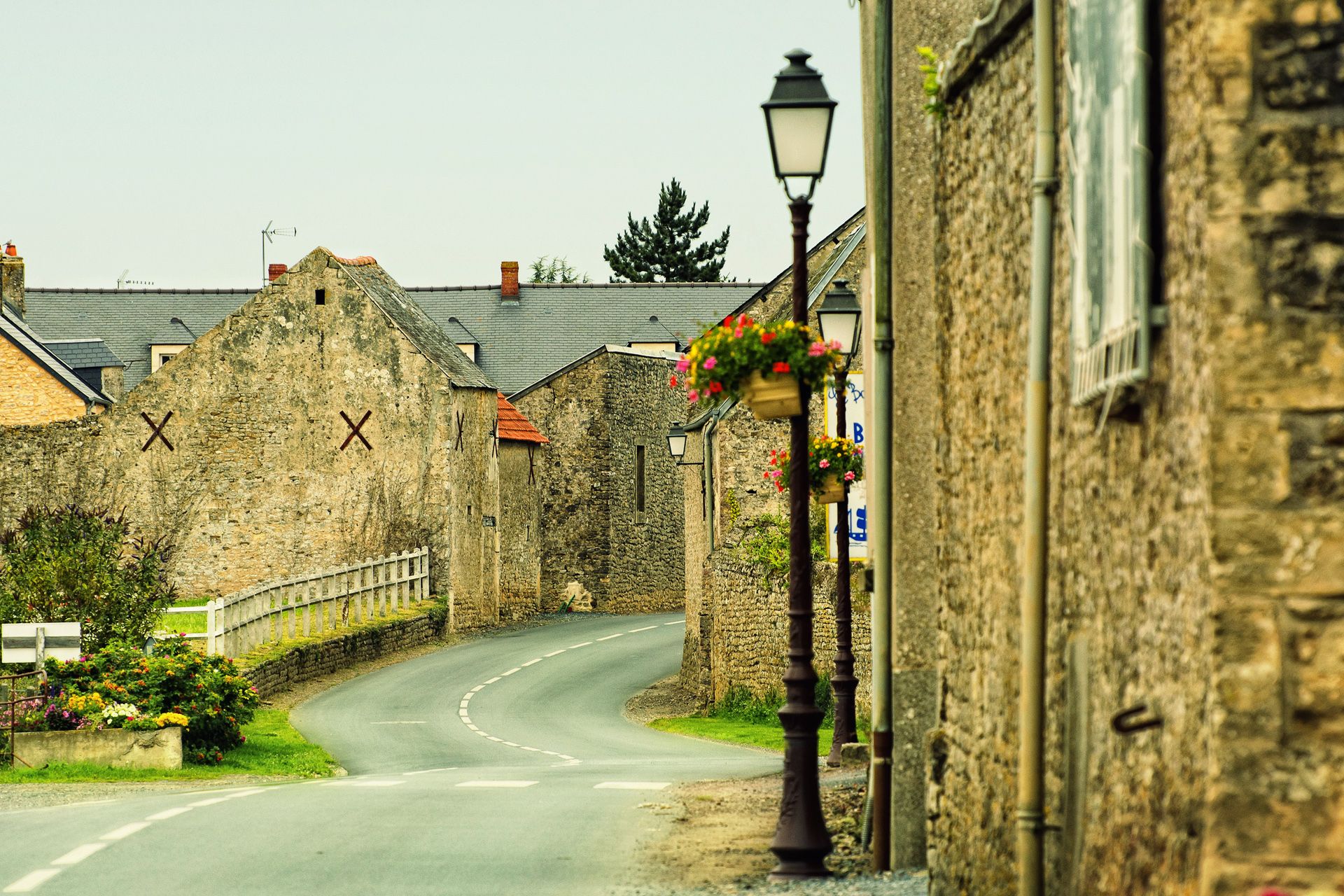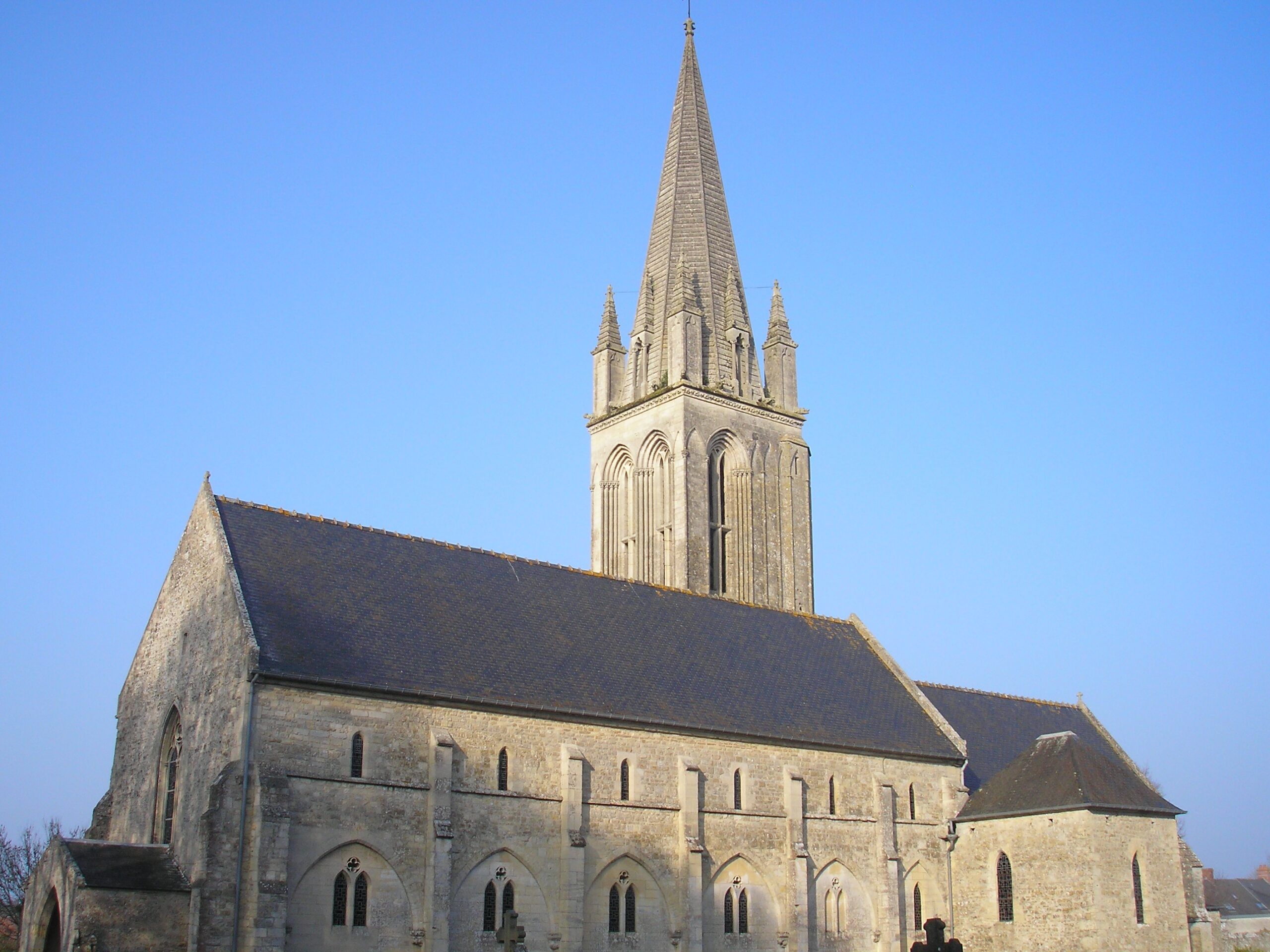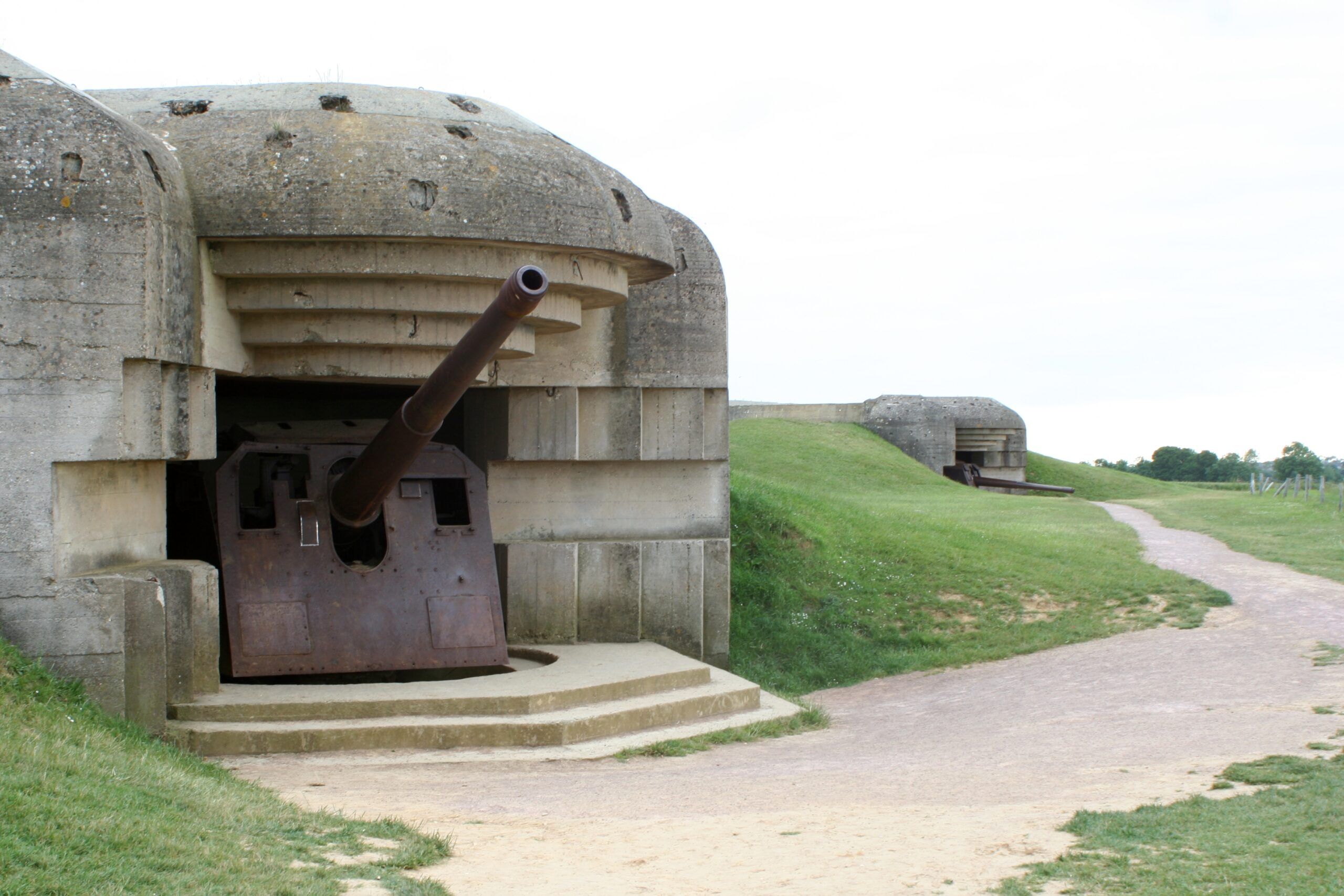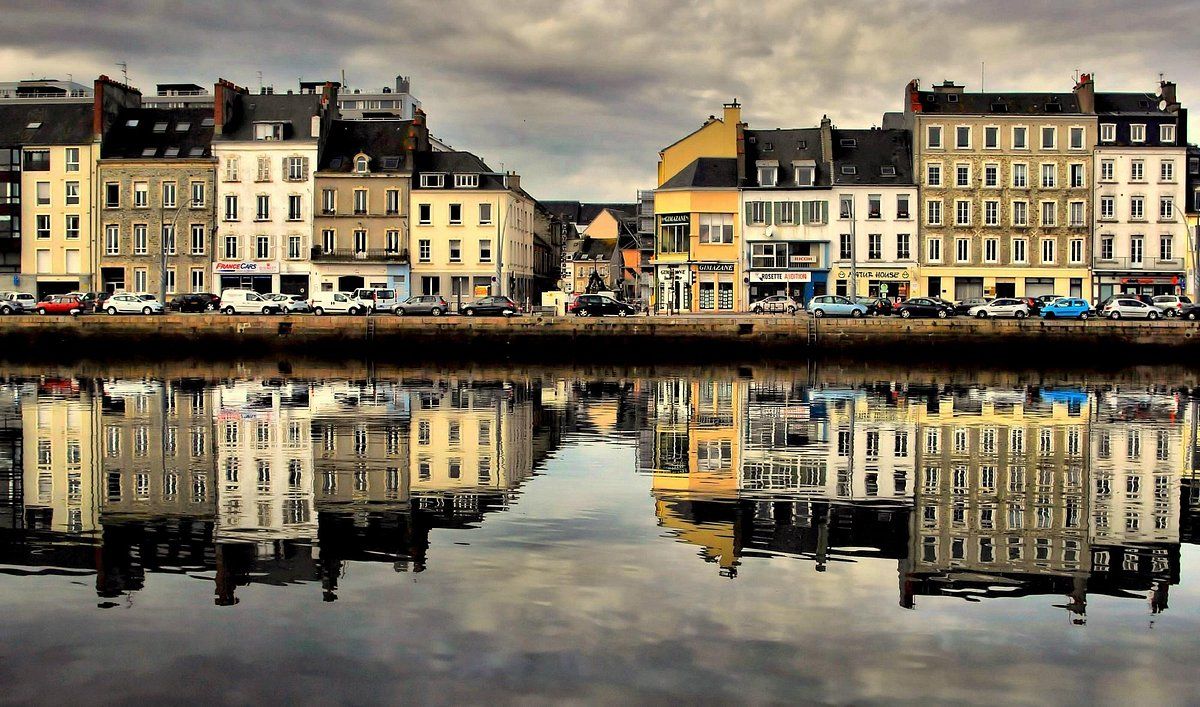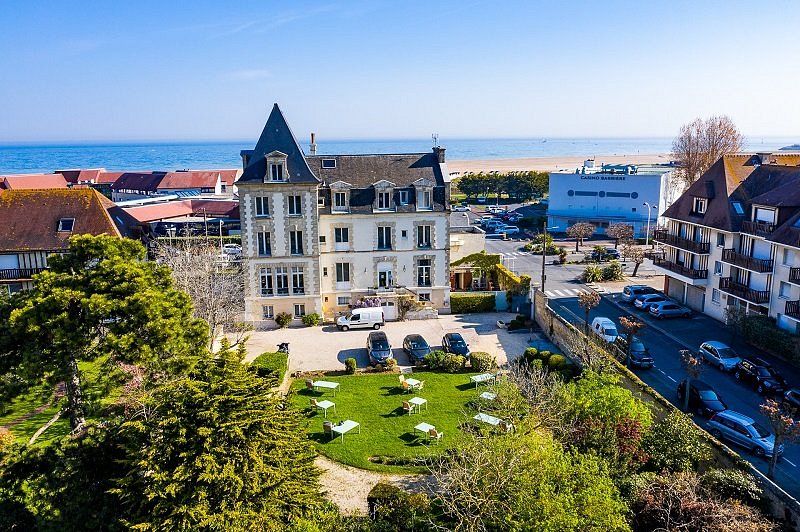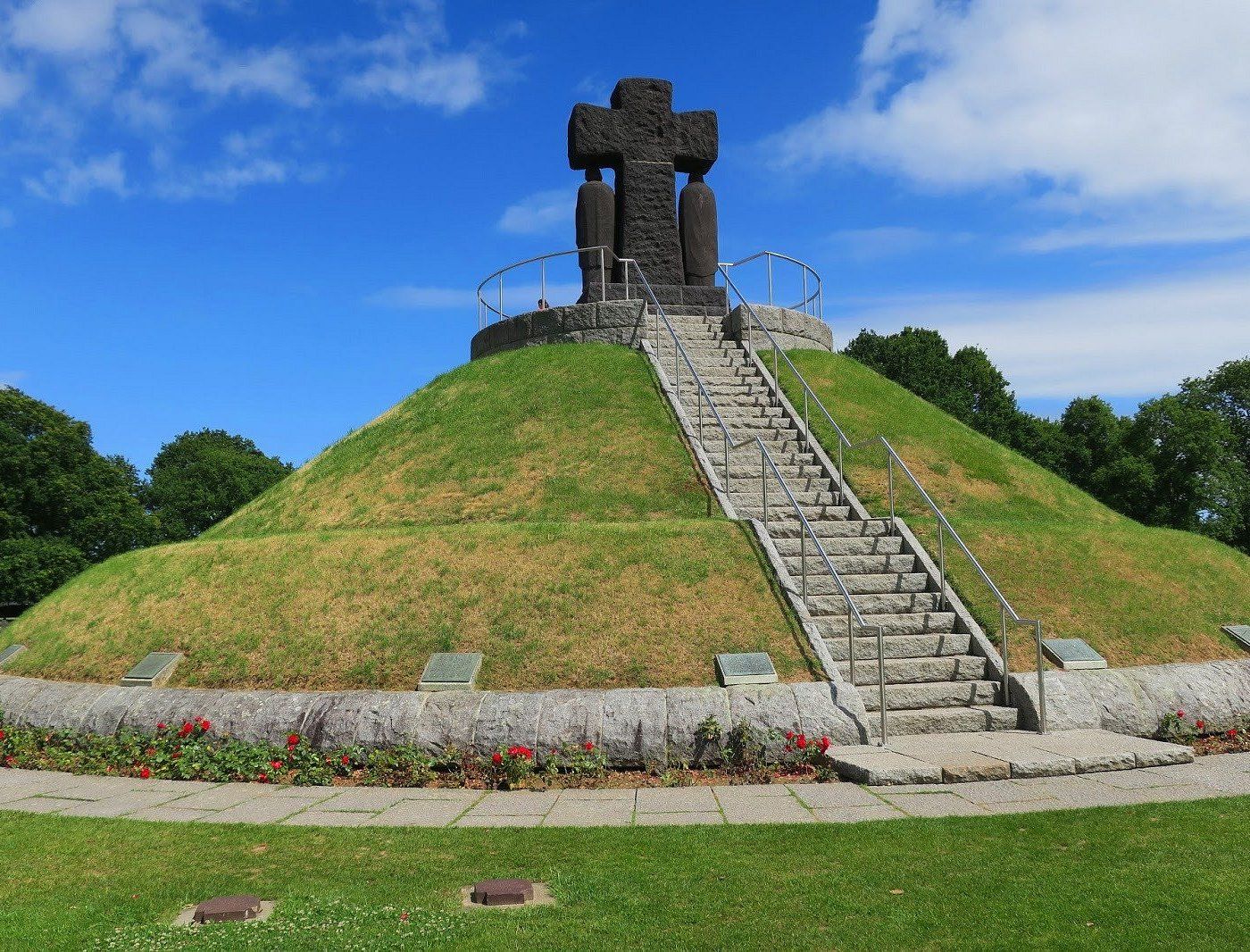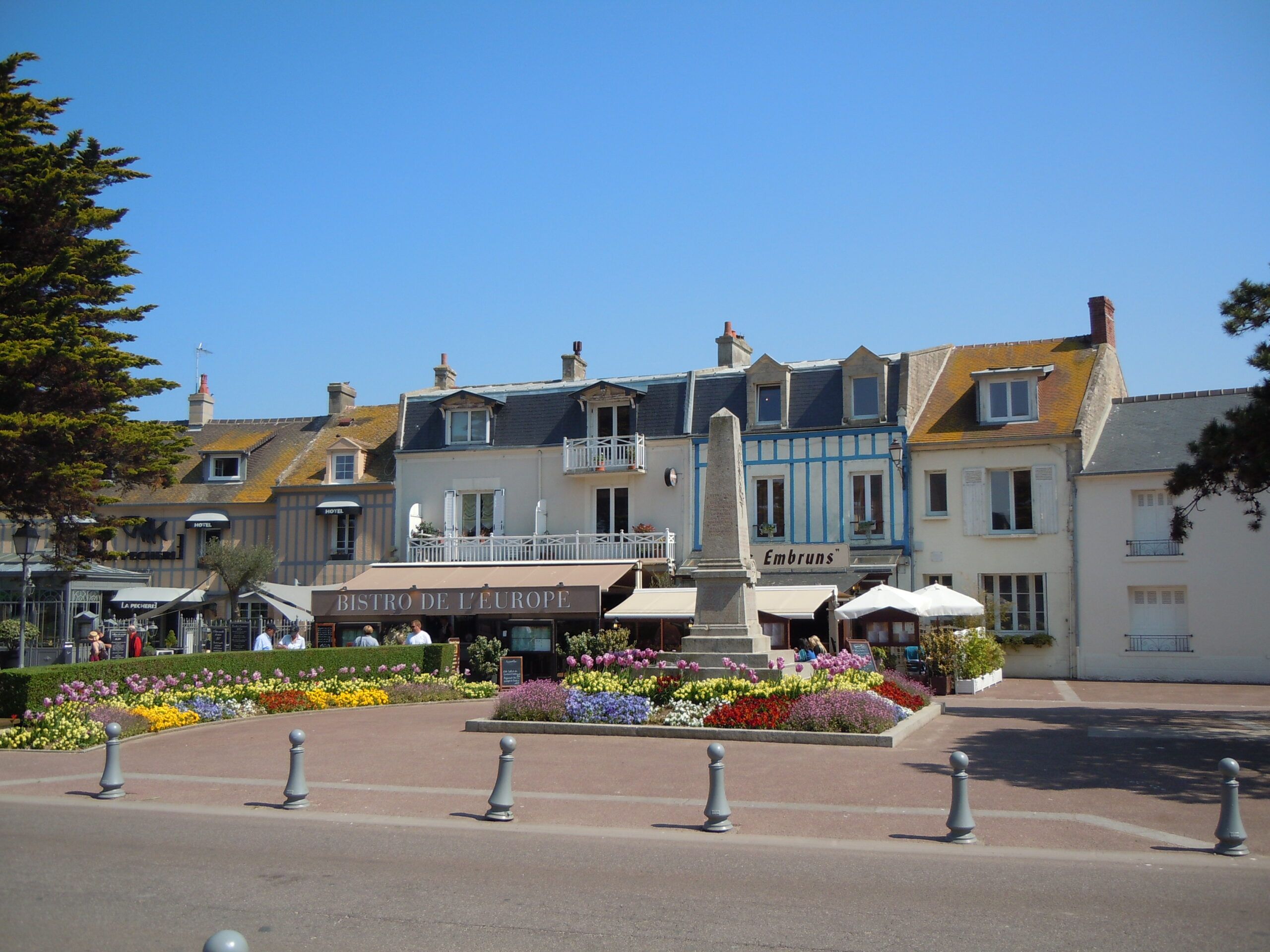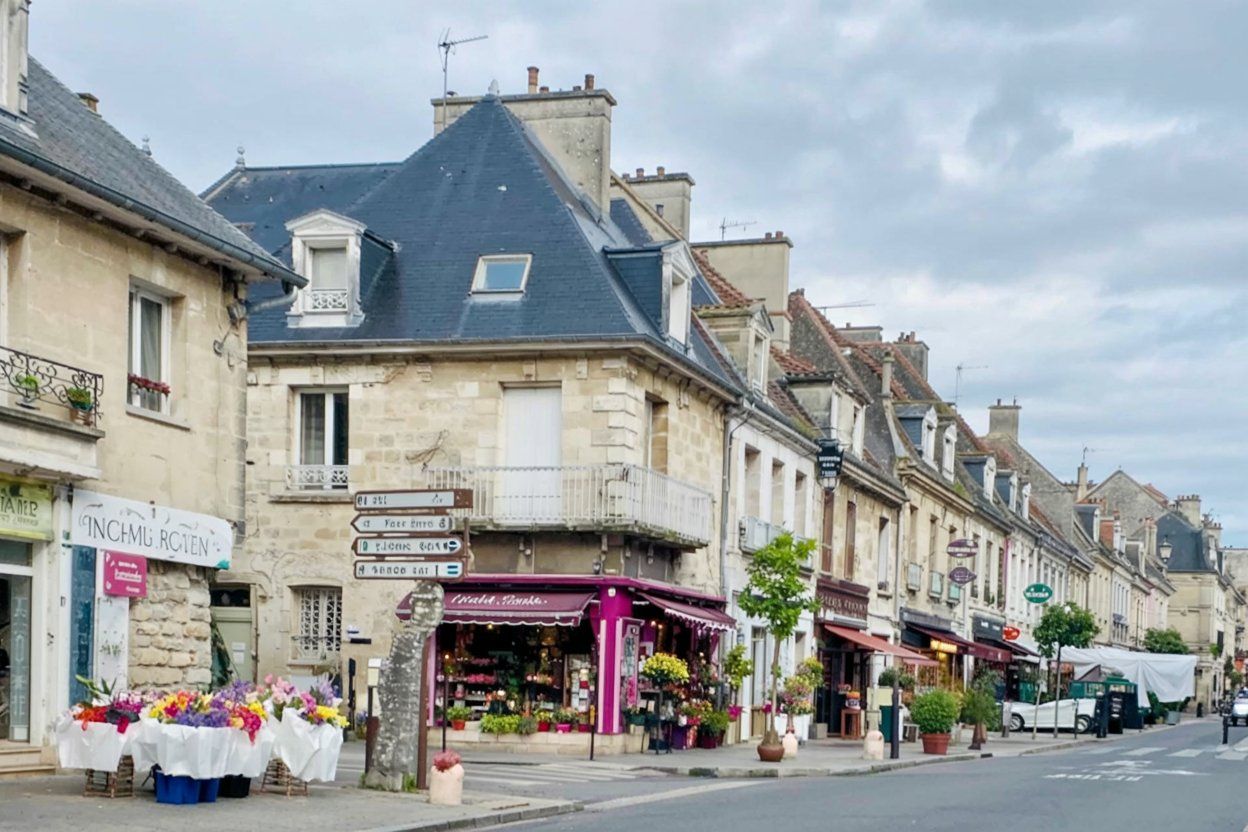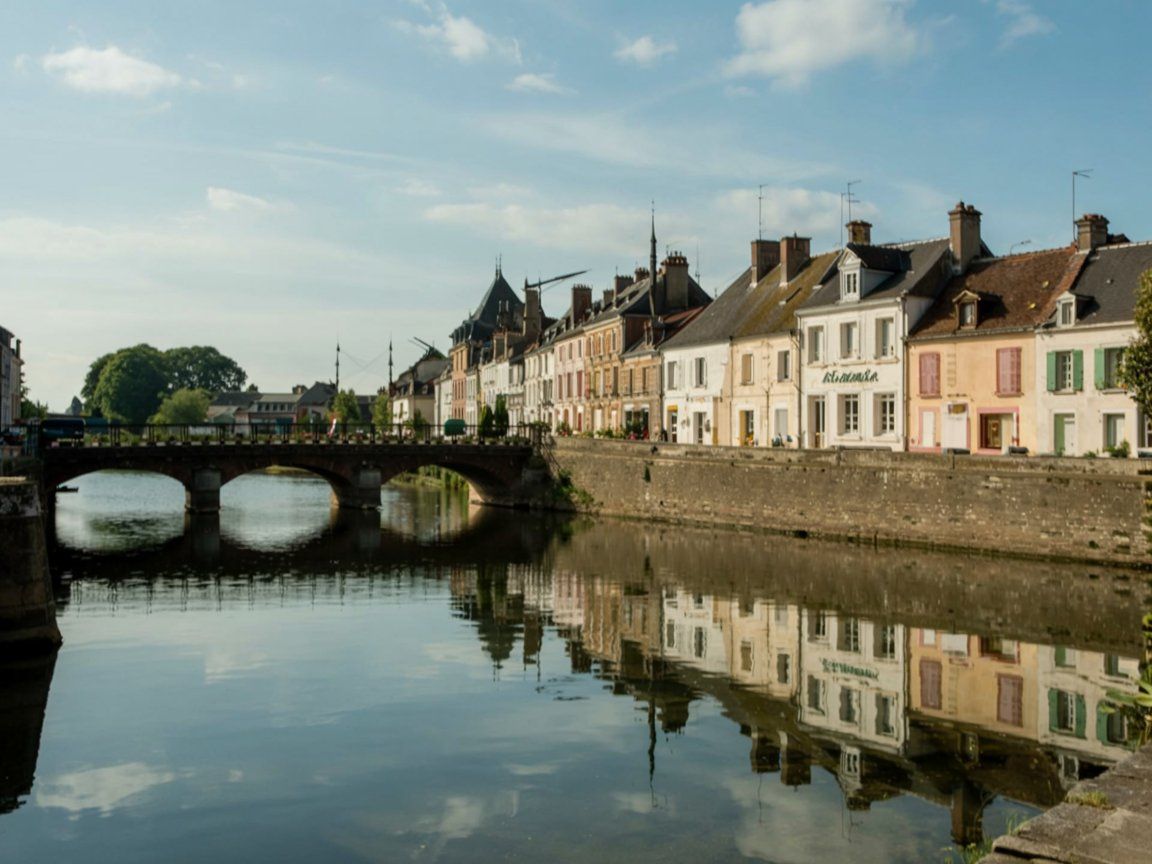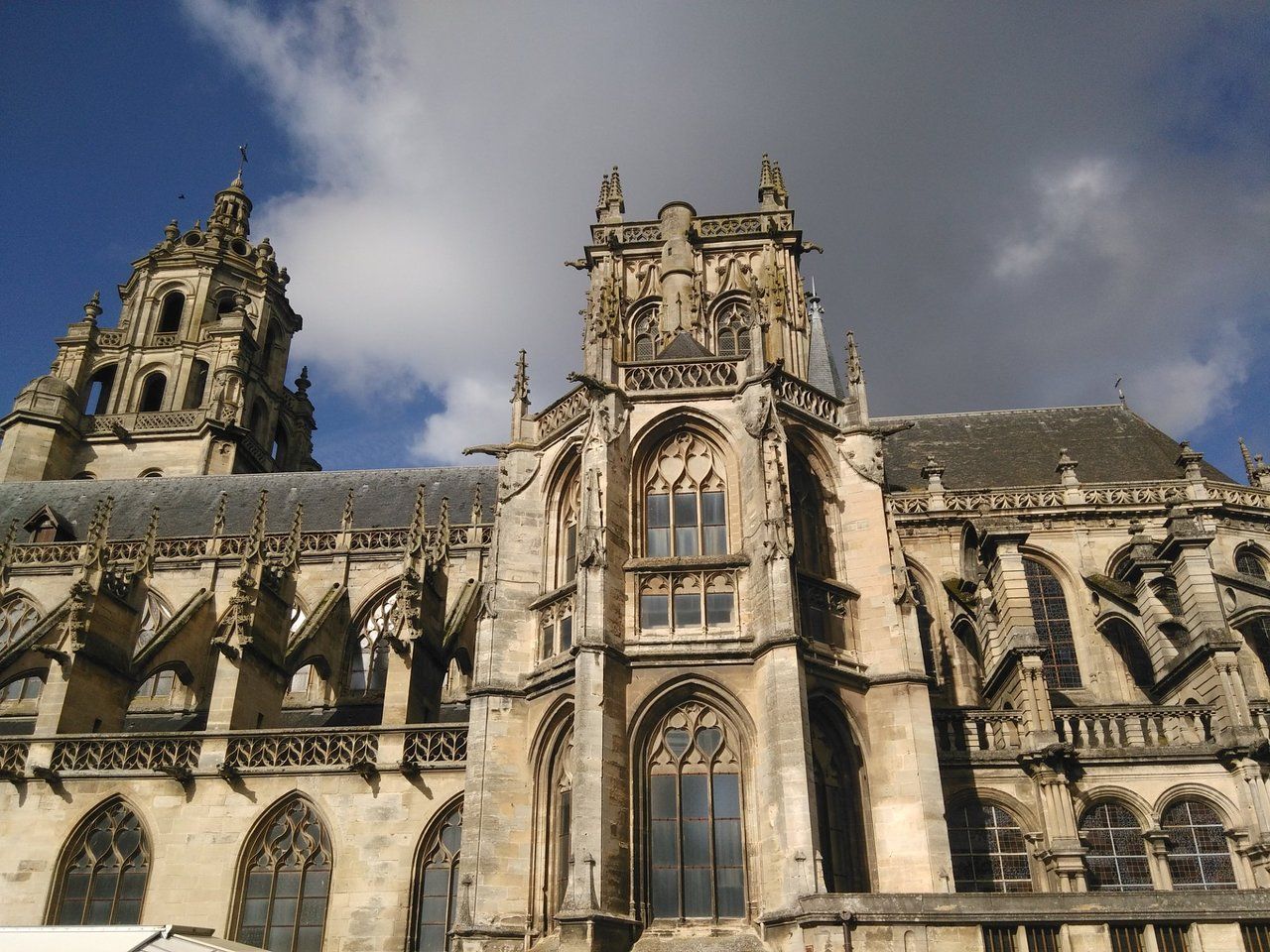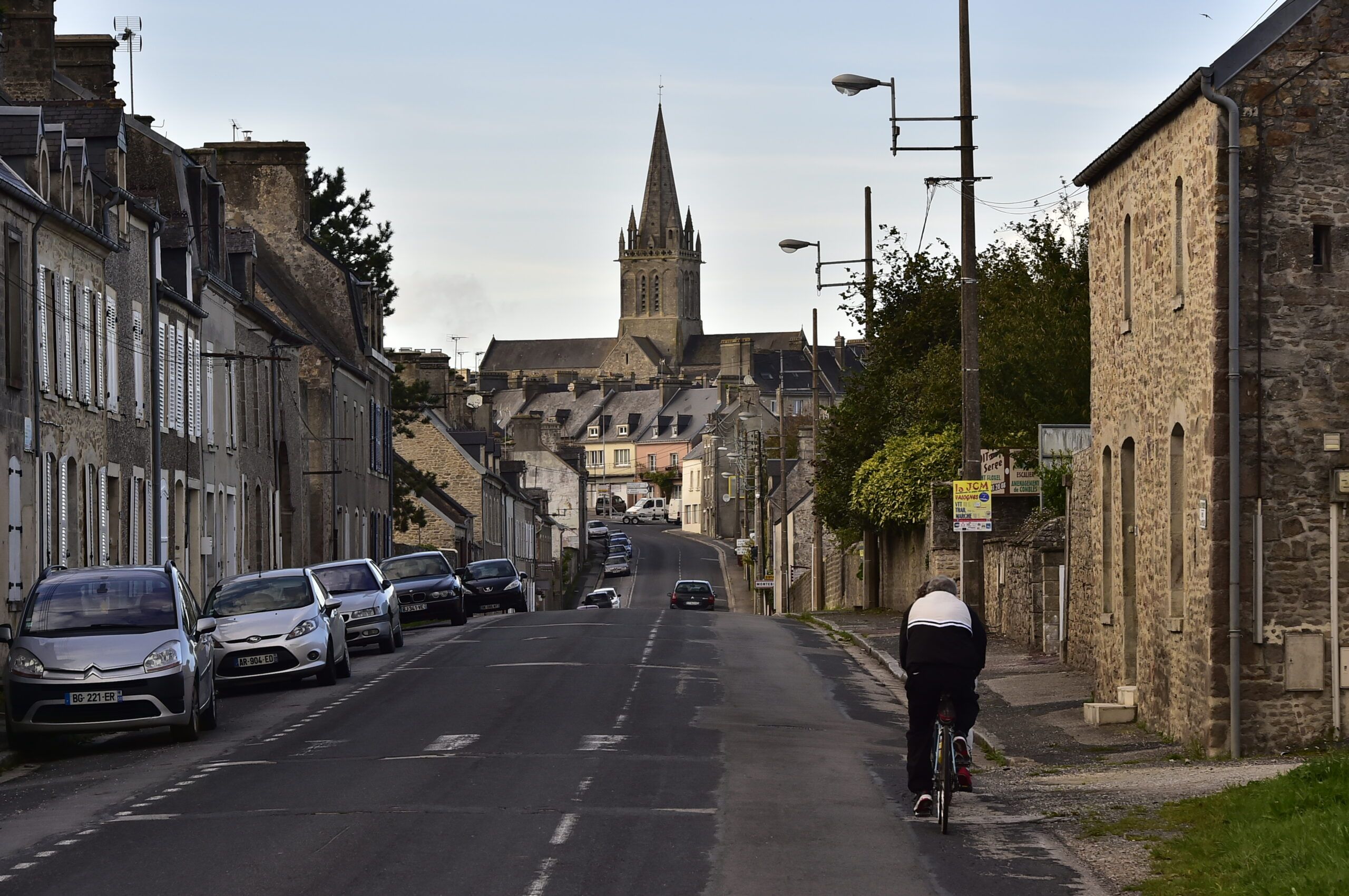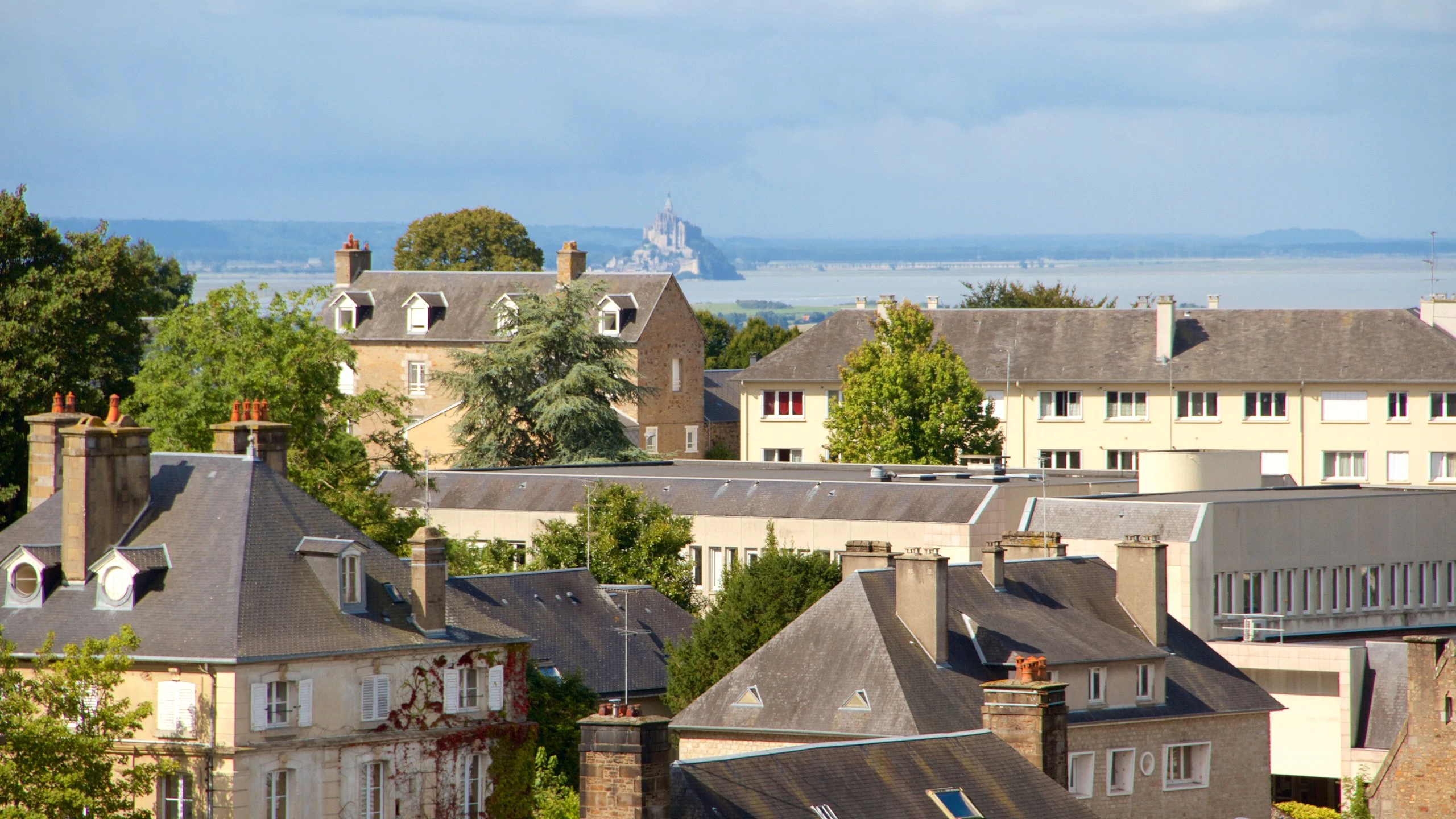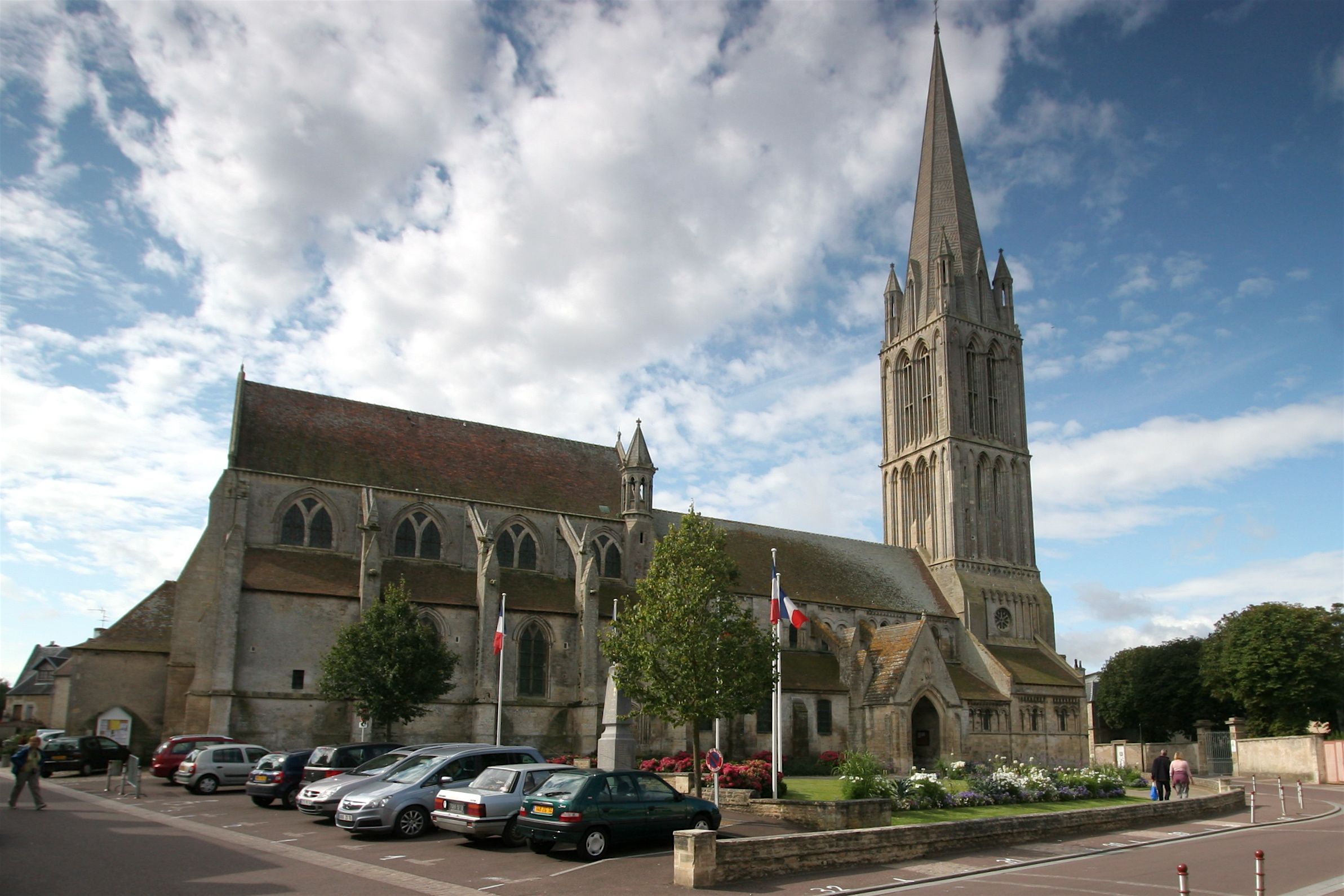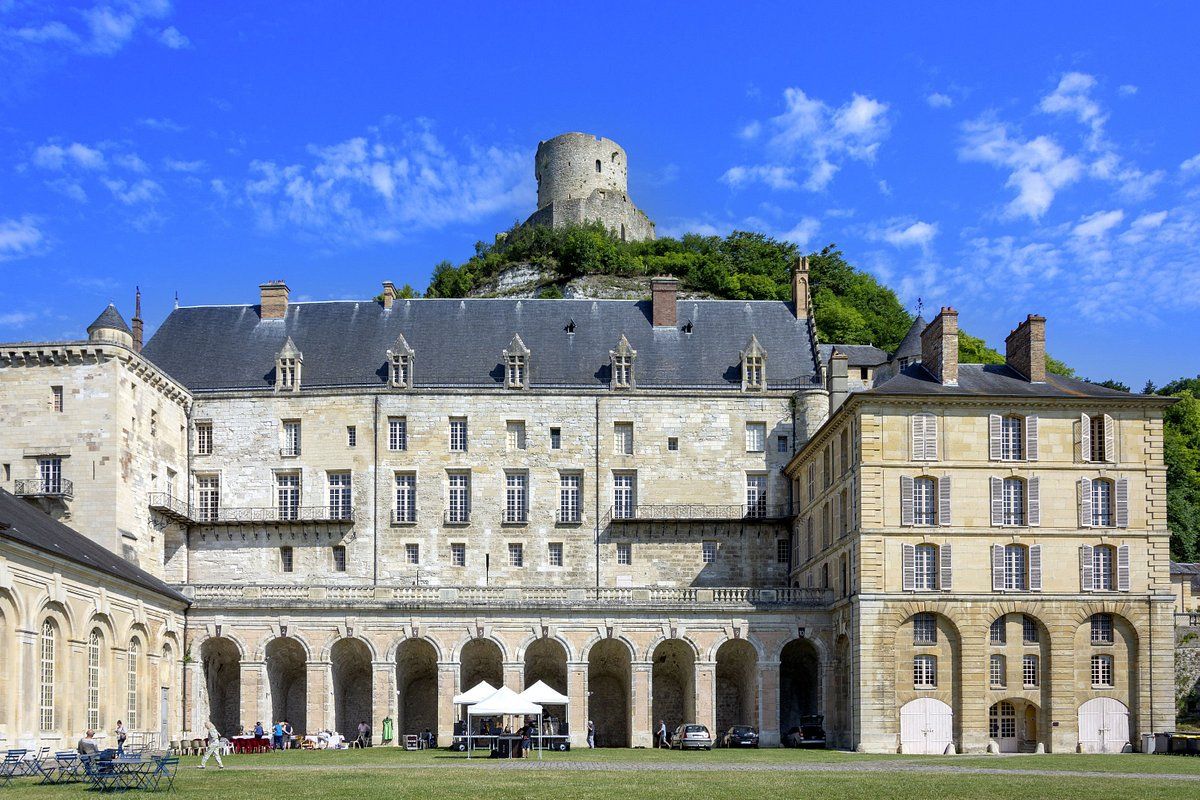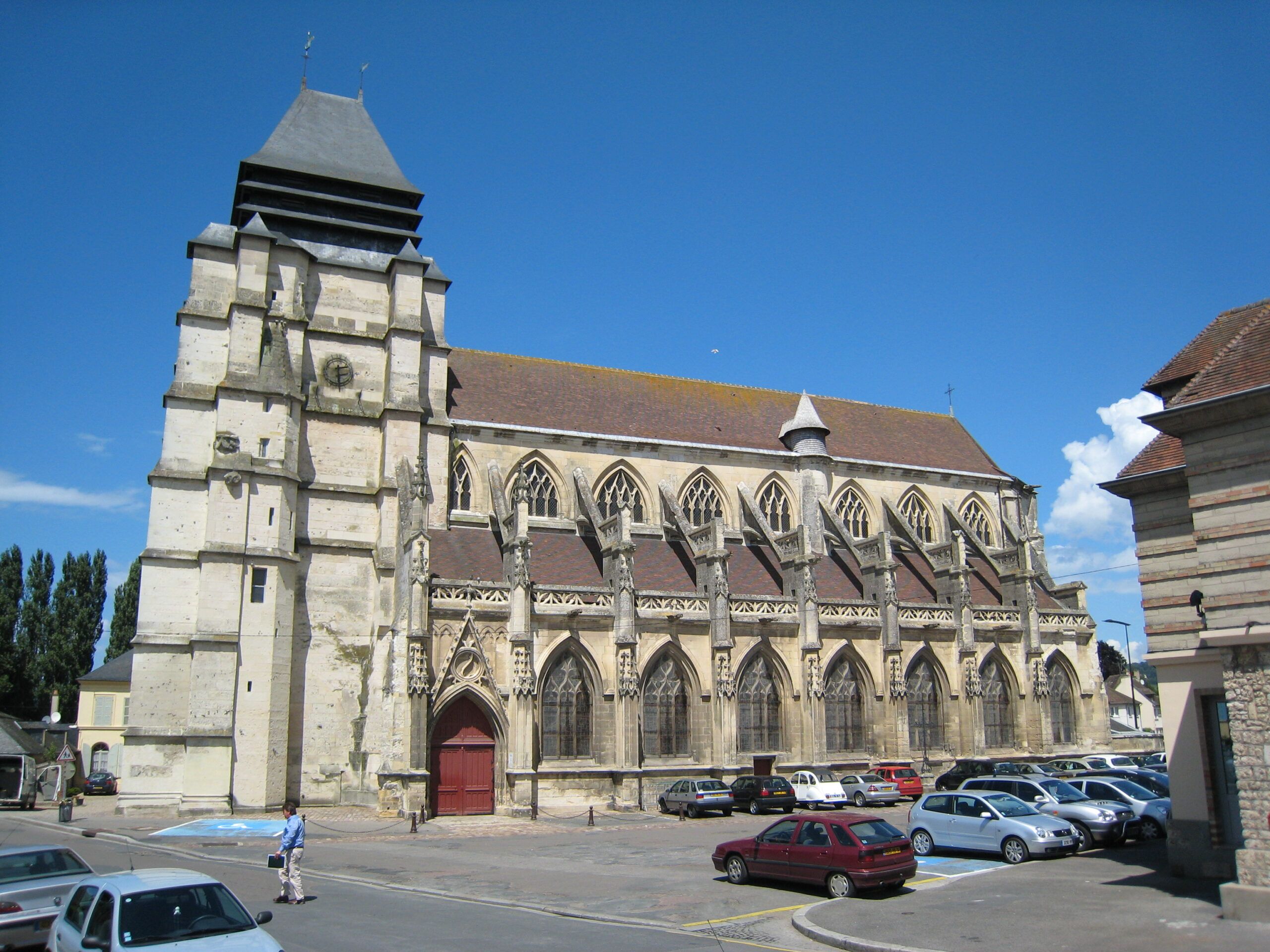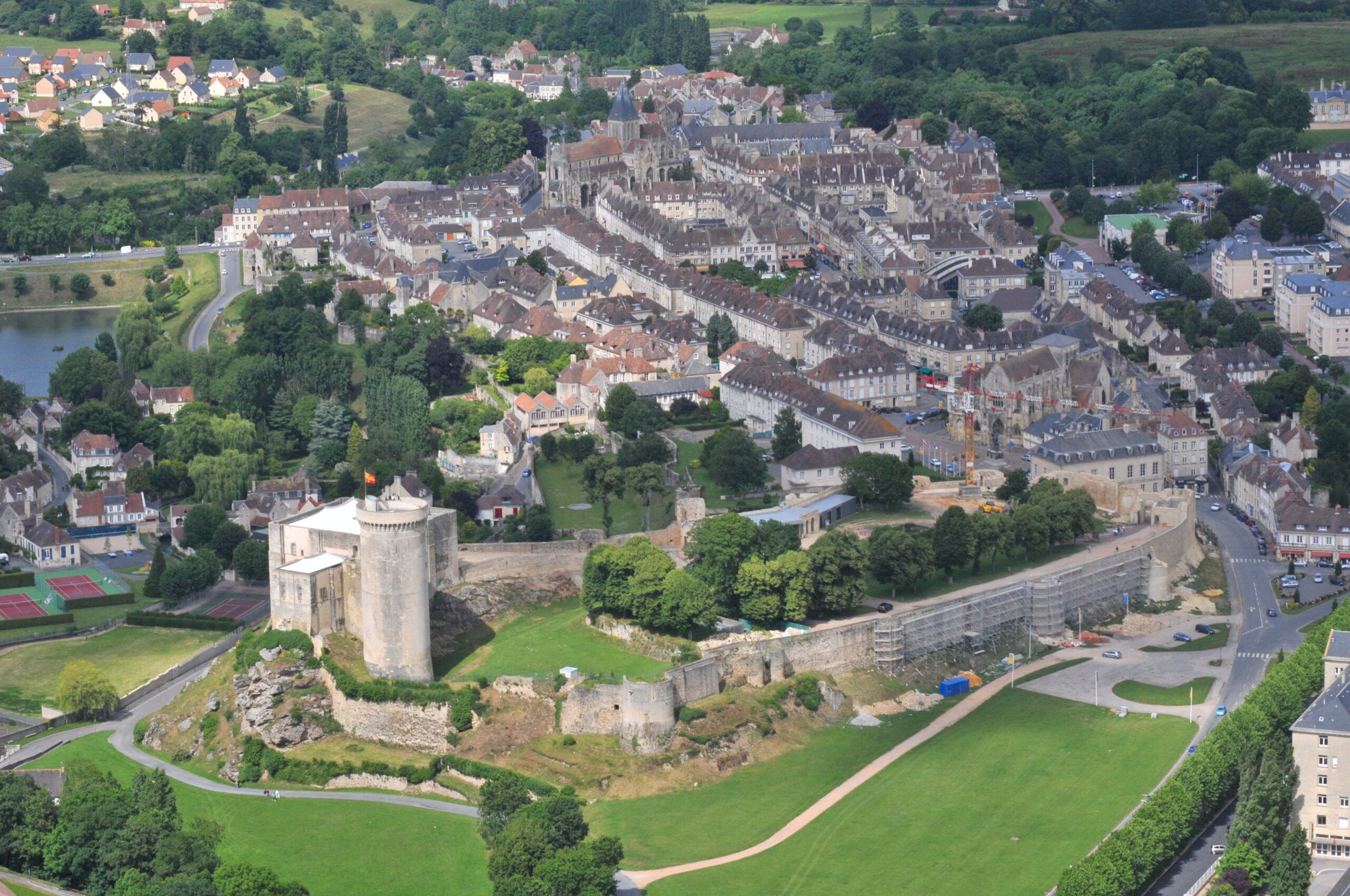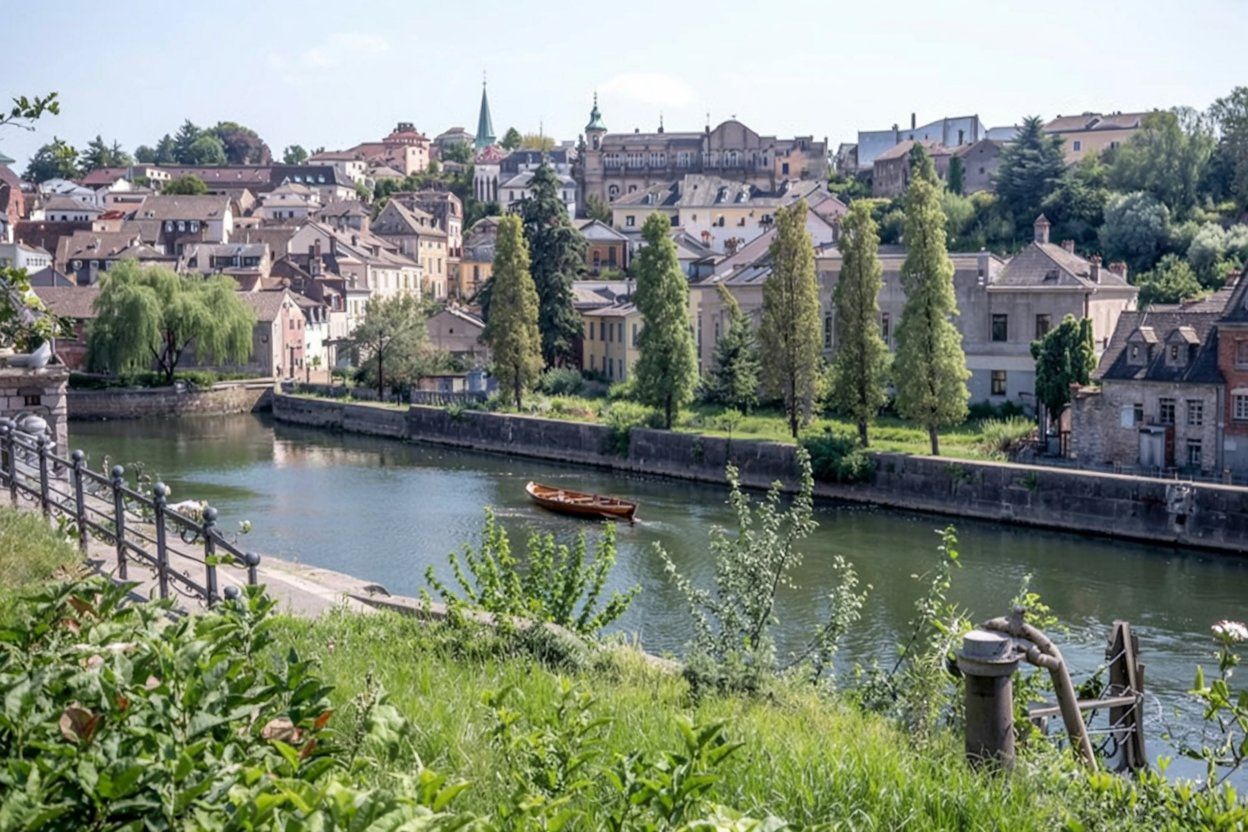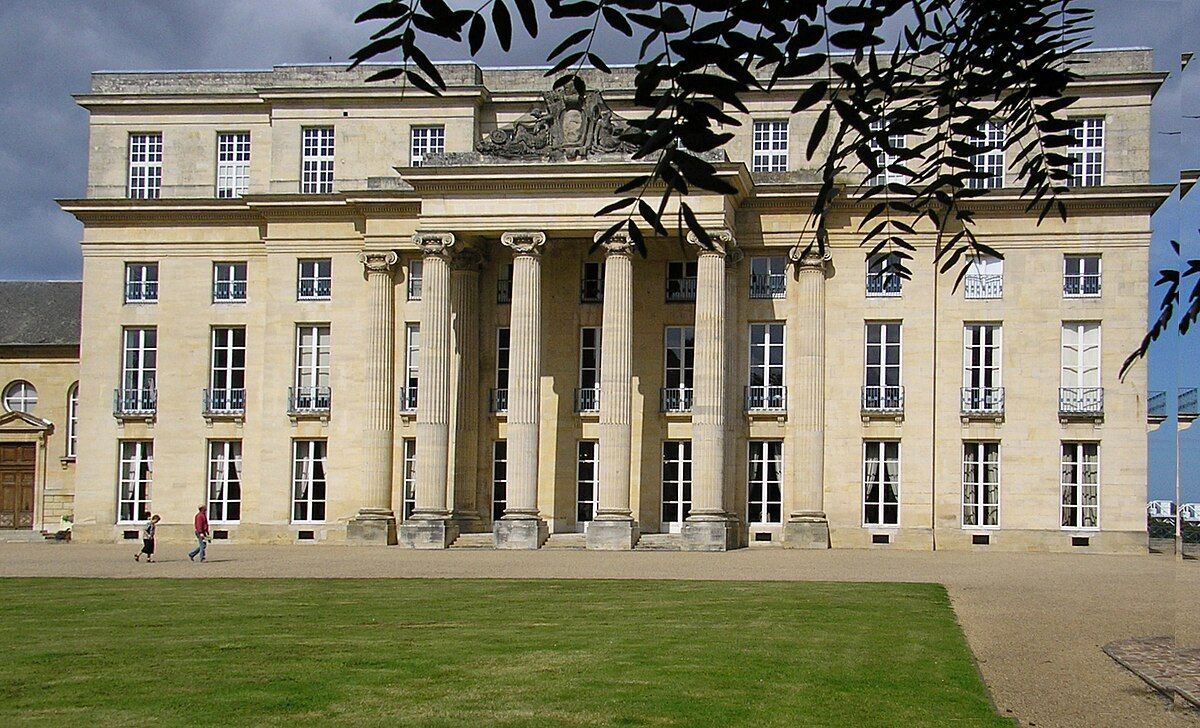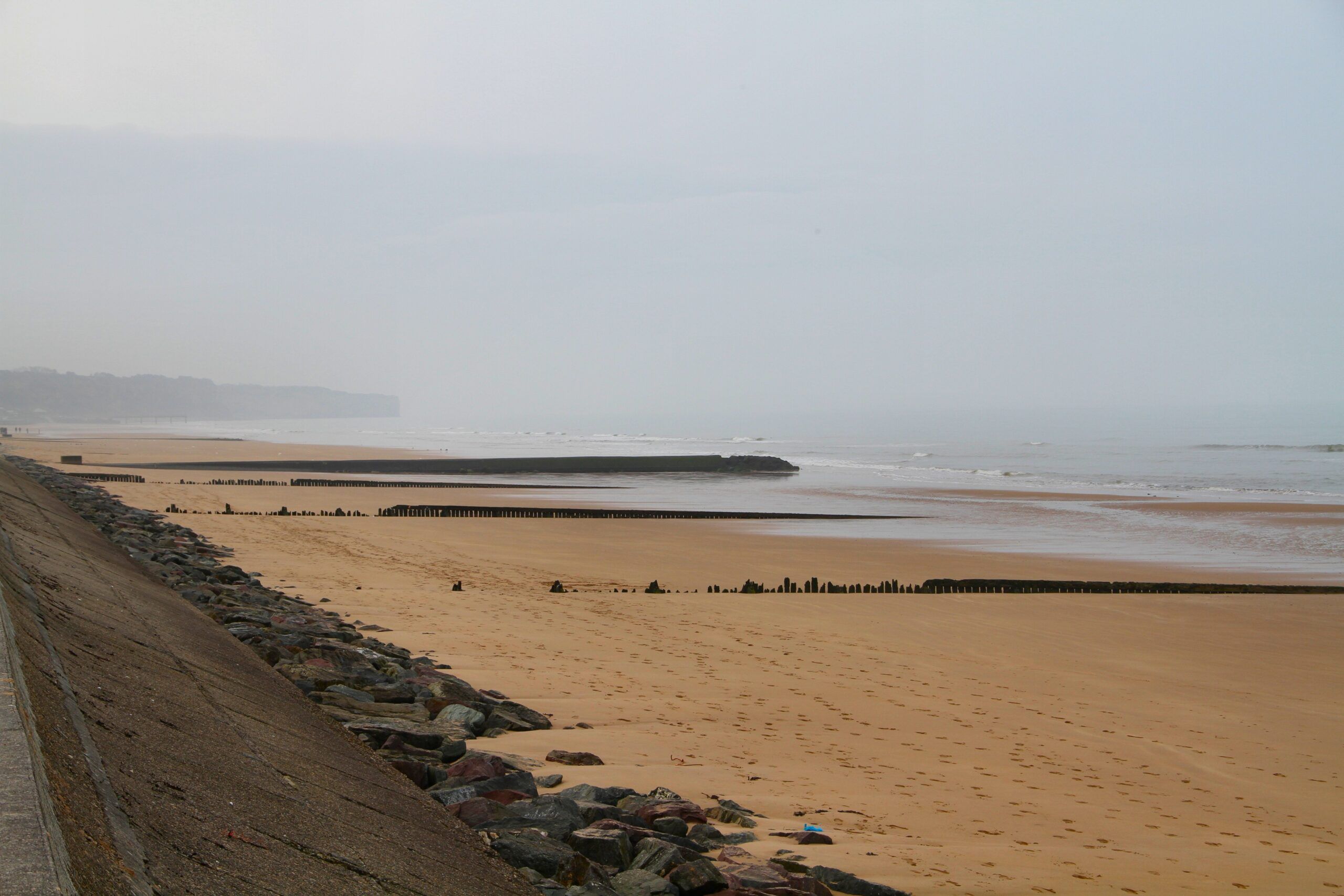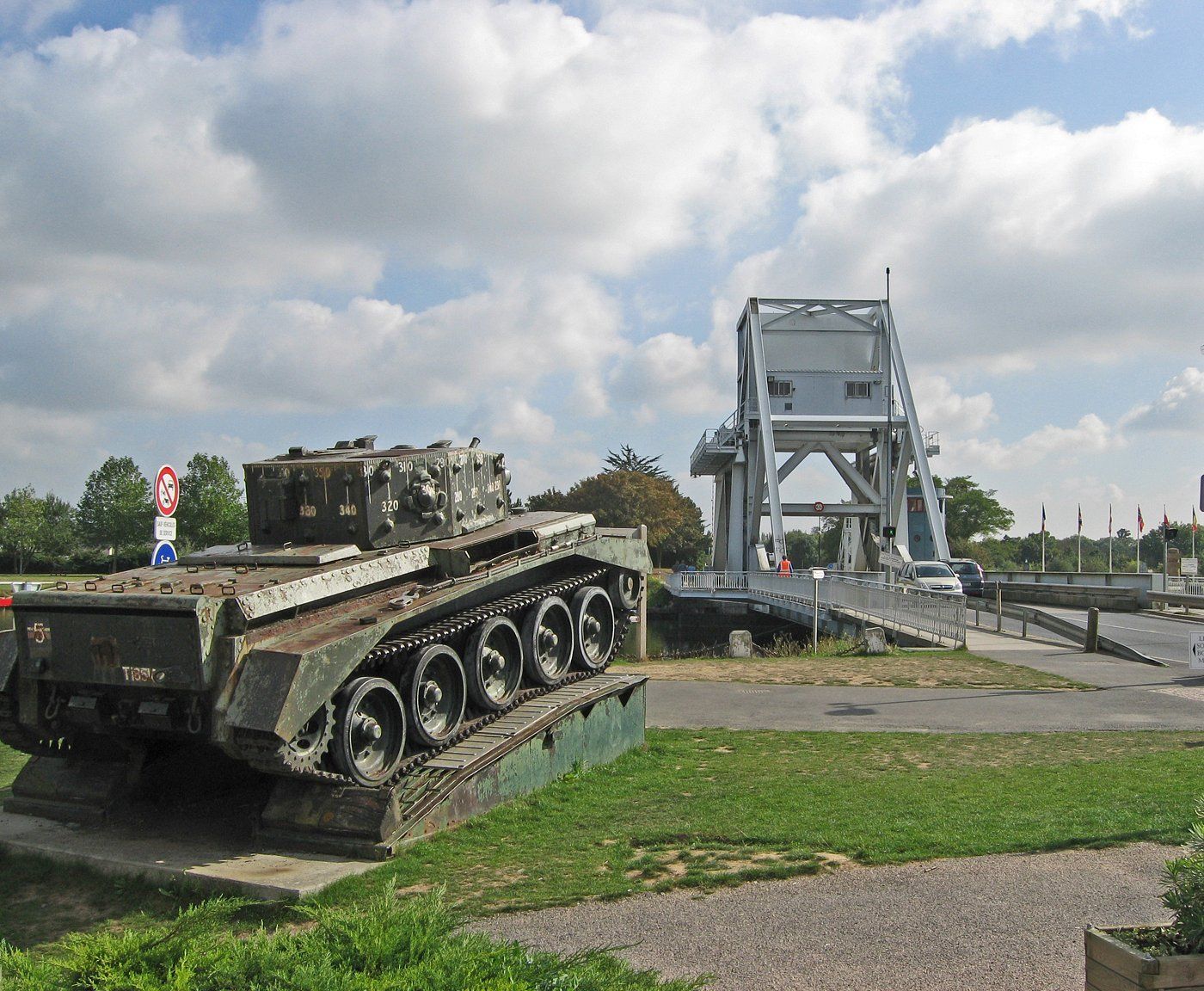Saint-Laurent-sur-Mer sits quietly along the Normandy coast of France, holding one of World War II’s most significant stories. This small town borders the stretch of sand once code-named Omaha Beach, where American forces faced fierce resistance during the D-Day landings of June 6, 1944. Today, Saint-Laurent-sur-Mer serves as both a living memorial and a practical base for visitors exploring the D-Day sites, with its shoreline marked by one of the ten Signal Monuments that identify key WWII locations along the Normandy coastline.
When you visit Saint-Laurent-sur-Mer, you step into a place where history and present day exist side by side. The town offers a unique opportunity to walk the same beach where Allied soldiers fought to gain a foothold in Nazi-occupied France. Beyond its historical significance, the town provides access to the stunning Normandy countryside and serves as a starting point for exploring all five D-Day landing beaches.
Visit Recommended D-Day historic hotels and B&Bs along the invasion beaches.
The town itself is modest, preserving much of its character from the war years while offering the basics for travelers. As you wander Saint-Laurent-sur-Mer, you’ll find both solemn reflection at memorial sites and moments of peace along a coastline that once witnessed one of history’s most important military operations.
Historical Overview of D-Day at Saint-Laurent-sur-Mer
Saint-Laurent-sur-Mer became forever etched in history on June 6, 1944, when Allied forces stormed Omaha Beach during Operation Overlord. This small French coastal town witnessed one of the bloodiest and most consequential military operations of World War II.
The Events of June 6, 1944
At dawn on June 6, 1944, American troops approached the shores of Saint-Laurent-sur-Mer, which formed part of Omaha Beach. The landing began at 6:30 AM, with soldiers facing intense German gunfire from the cliffs above.
Many landing craft missed their targets because of strong currents and navigation problems. Soldiers had to wade through neck-deep water under heavy enemy fire. The first waves took devastating casualties, with many men killed before they even made it to the shore.
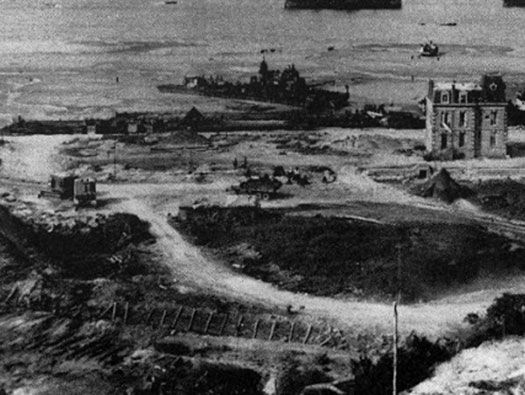
Still, soldiers like Private Barrett (noted in Army records) pushed forward through brutal conditions. By mid-morning, small groups of Americans began scaling the bluffs above the beach.
By the end of the day, the Americans had carved out a shaky foothold at Saint-Laurent-sur-Mer, but the cost was staggering. More than 2,000 American soldiers were killed, wounded, or missing at Omaha Beach on that single day.
Role of Omaha Beach in Operation Overlord
Omaha Beach stretched nearly 6 kilometers along the Normandy coast, with Saint-Laurent-sur-Mer right near the center. This was one of two American landing zones, about 12 kilometers east of Utah Beach.
Omaha’s capture was essential—it linked the American forces at Utah Beach with British and Canadian troops landing further east.
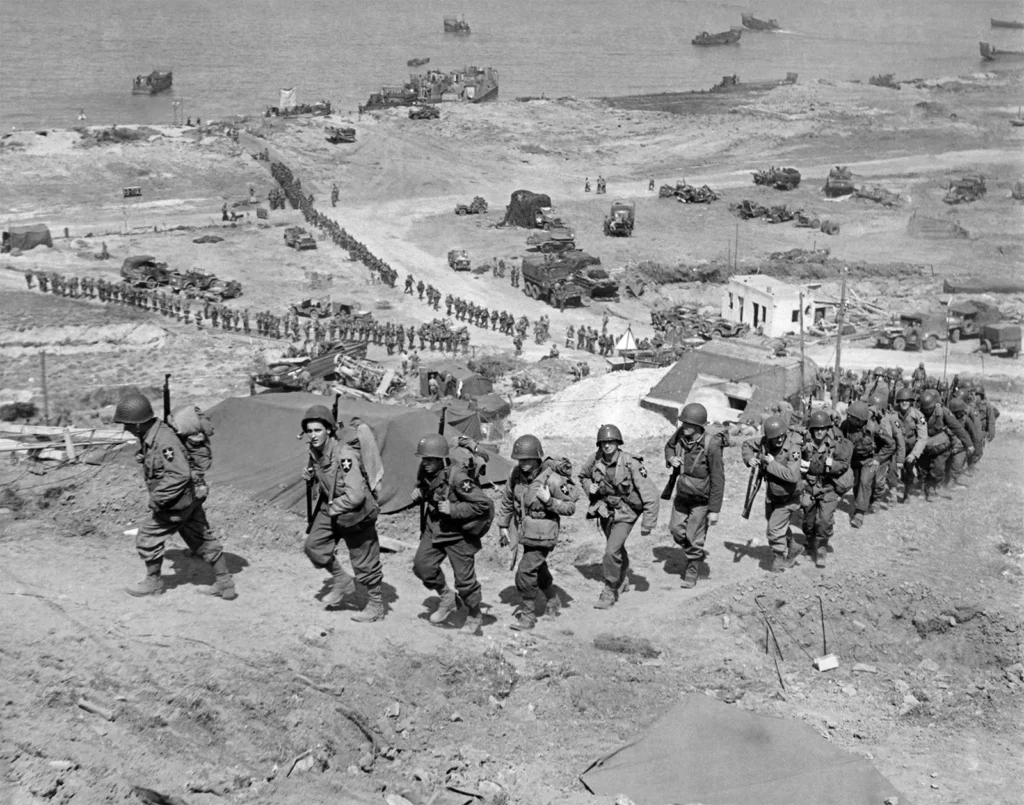
Omaha presented the toughest terrain of all the beaches:
- High bluffs gave German defenders a clear advantage
- Few exits from the beach caused bottlenecks
- German defenses included mines, obstacles, and gun emplacements
Even with all these obstacles, taking Omaha was crucial for the Allies. The breakthrough at Saint-Laurent-sur-Mer opened the way inland and set the stage for liberating Western Europe.
Impact on Normandy and Europe
The battle at Saint-Laurent-sur-Mer changed the quiet Norman village forever. Homes and buildings took heavy damage during the fighting. Many residents had evacuated before the invasion and returned to a community that would never be the same.
The landing at Omaha Beach, despite the losses, marked the beginning of the end for Nazi control in Western Europe. It gave the Allies a foothold that became a major supply route for the push toward Germany.
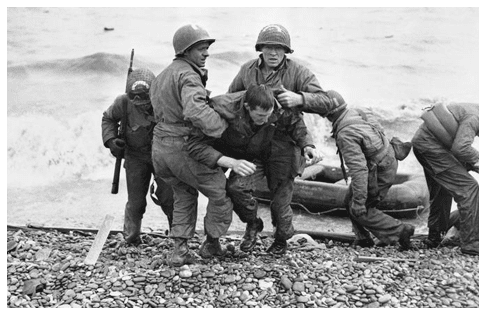
For Europe, what happened at Saint-Laurent-sur-Mer was the first real step toward freedom after years of Nazi occupation. The sacrifices on these beaches stopped Hitler from sending reinforcements to other fronts.
The battle showed Allied determination and the willingness to pay a steep price for freedom. The bravery of soldiers who faced almost impossible odds and kept moving forward is hard to overstate.
The Liberation of France
The victory at Saint-Laurent-sur-Mer started the liberation of France from four years under German occupation. From this beachhead, American troops pushed inland, village by village.
By late August 1944, Paris was free, and by spring 1945, Allied forces had entered Germany. For the people of Saint-Laurent-sur-Mer and nearby Norman villages, freedom came with a heavy cost—destruction and civilian casualties.
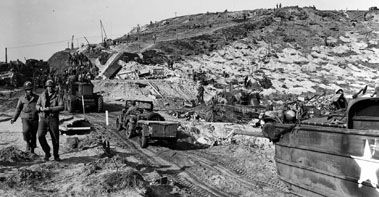
The liberation brought a mix of emotions:
- Relief and joy at being free
- Grief for those lost
- Worry about rebuilding shattered lives
France’s gratitude to its liberators is still obvious today in the many monuments and cemeteries across Normandy. The American Cemetery near Saint-Laurent-sur-Mer holds 9,388 graves of U.S. soldiers—a stark reminder of the price of freedom.
For the French, what happened at Saint-Laurent-sur-Mer isn’t just military history—it’s about regaining their sovereignty and democratic values.
Major Sites and Memorials
Saint-Laurent-sur-Mer has several important historical landmarks that keep the memory of D-Day alive. These sites honor Allied sacrifice and help visitors understand what happened here on June 6, 1944.
Omaha Beach Landmarks
Omaha Beach runs along Saint-Laurent-sur-Mer’s coastline, marking one of D-Day’s toughest landing zones. Today, you’ll spot the iconic steel sculpture “Les Braves” rising from the sand—three shapes symbolizing hope, freedom, and fraternity.
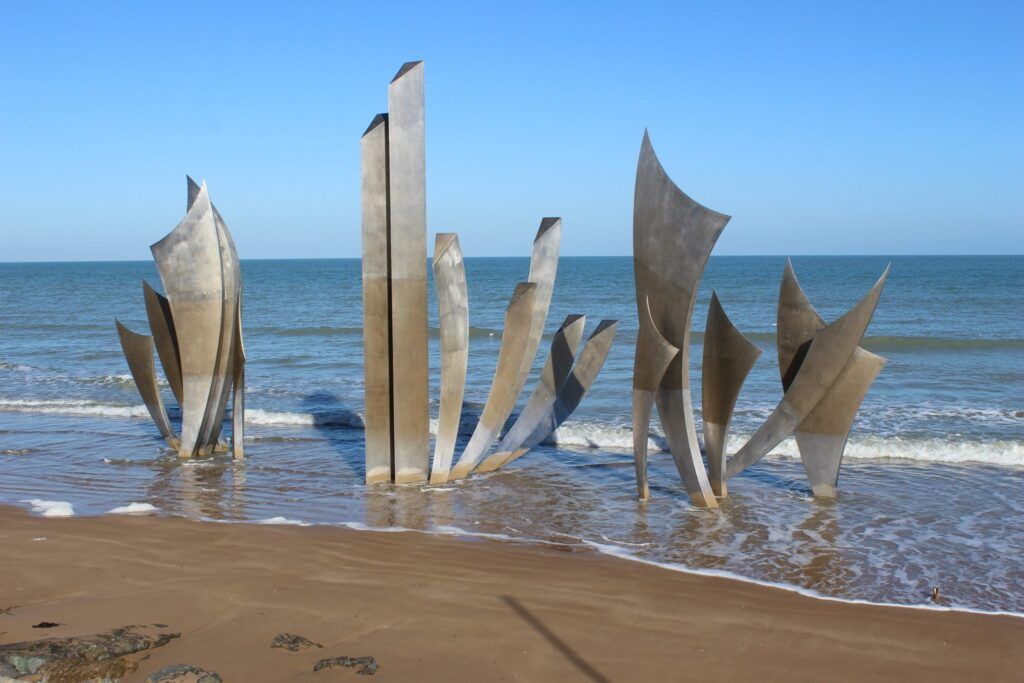
The beach itself is a living memorial. At low tide, you can walk the same sand where American soldiers fought for every inch. Information panels along the beachfront tell the story of the tactical challenges and the significance of this sector.
Check out the concrete bunkers and gun emplacements still sitting on the bluffs. These old fortifications are a stark reminder of what American troops faced as they moved inland.
Normandy American Cemetery
The Normandy American Cemetery sits on land that France permanently granted to the United States. Located in nearby Colleville-sur-Mer, it was built on the site of the old American St. Laurent Cemetery.
Nearly 9,400 American service members are buried here, marked by rows of white marble crosses and Stars of David. The cemetery overlooks Omaha Beach, making the connection between battlefield and sacrifice impossible to miss.
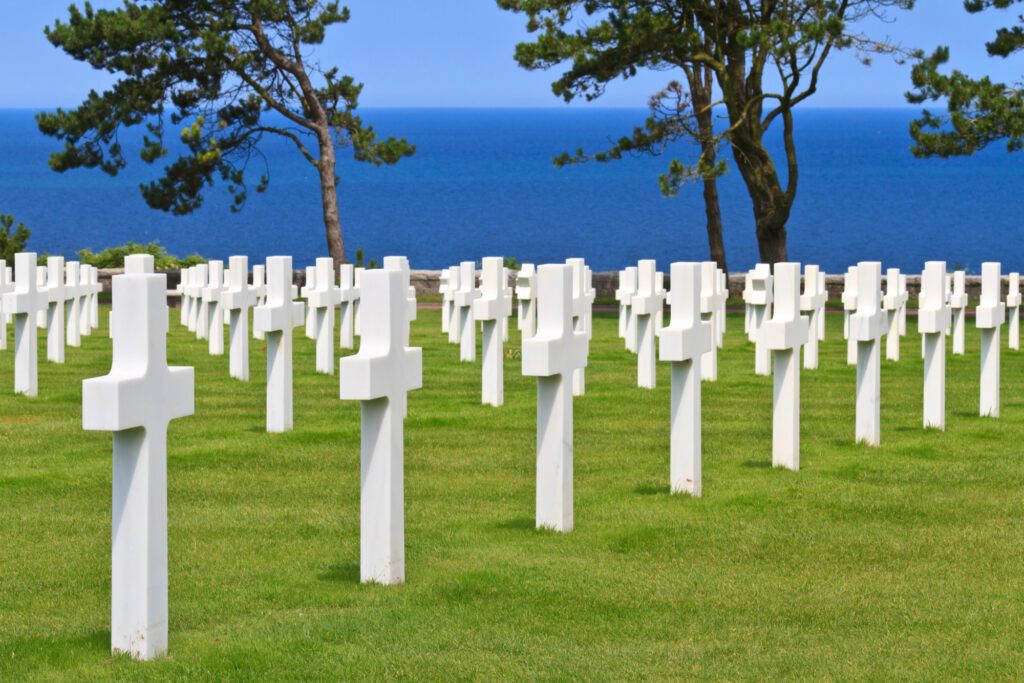
The Walls of the Missing list almost 1,600 names of those never recovered. The visitor center offers exhibits, personal stories, and multimedia that add context and depth.
The cemetery hosts special ceremonies on Memorial Day and each D-Day anniversary, drawing veterans, officials, and people from around the world.
D-Day Monument and Memorials
The Signal Monument by the beach honors the 5th Engineer Special Brigade, who set up vital communications during the landing. Its distinctive design stands out as both a memorial and a point of reference for visitors.
The 1st Infantry Division Monument pays tribute to the “Big Red One” soldiers who led the assault on Omaha. This granite memorial stands as a testament to their courage under fierce enemy fire.
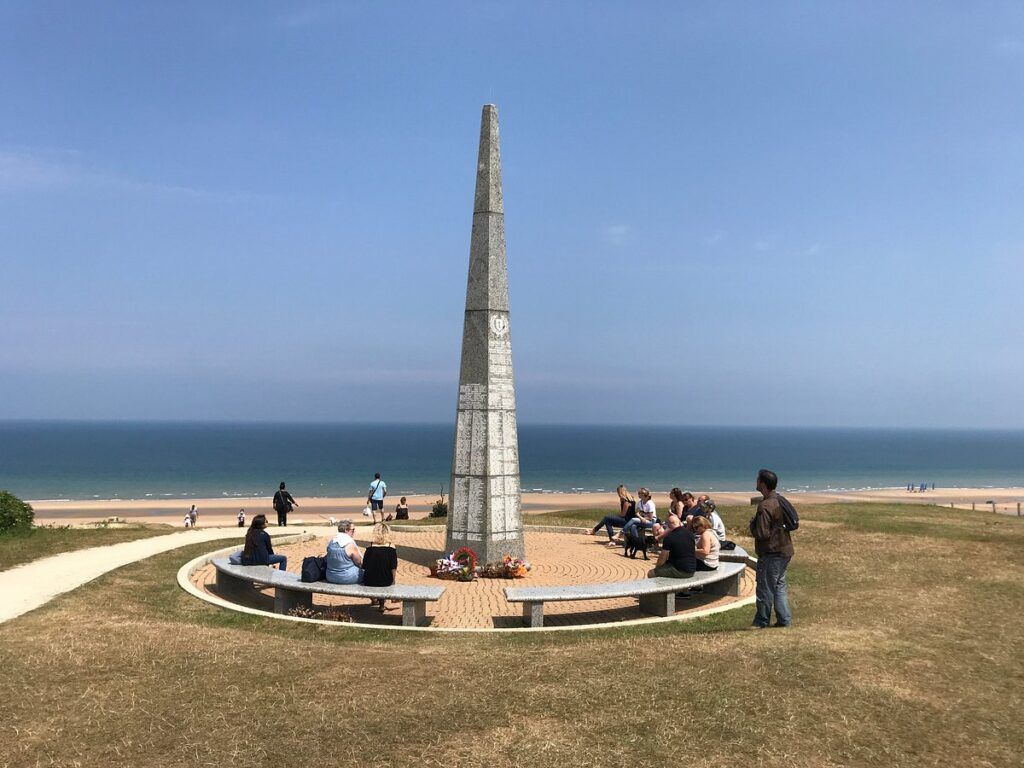
At the WN60 German resistance point, you can walk through preserved trenches and bunkers, with signs explaining their strategic role. It’s a sobering look at why the American landing here was so costly.
The local museum displays artifacts found on the beach, personal items from soldiers, and exhibits about civilian life during occupation and liberation.
Stay steps from Omaha Beach and historic landmarks. Best rates on local accommodations.
The Allied Forces and Their Contributions
D-Day brought together Allied forces from different nations, each bringing something unique to the fight across Normandy’s beaches.
American Soldiers and Units
American troops landed mainly at Omaha and Utah beaches near Saint-Laurent-sur-Mer. The 1st and 29th Infantry Divisions ran into the toughest German resistance at Omaha Beach and took heavy losses in the first assault.
By mid-morning on June 6, 1944, American troops had opened up a few paths off the beach, letting reinforcements move inland. The 116th Infantry Regiment played a key role in breaking through those defenses.
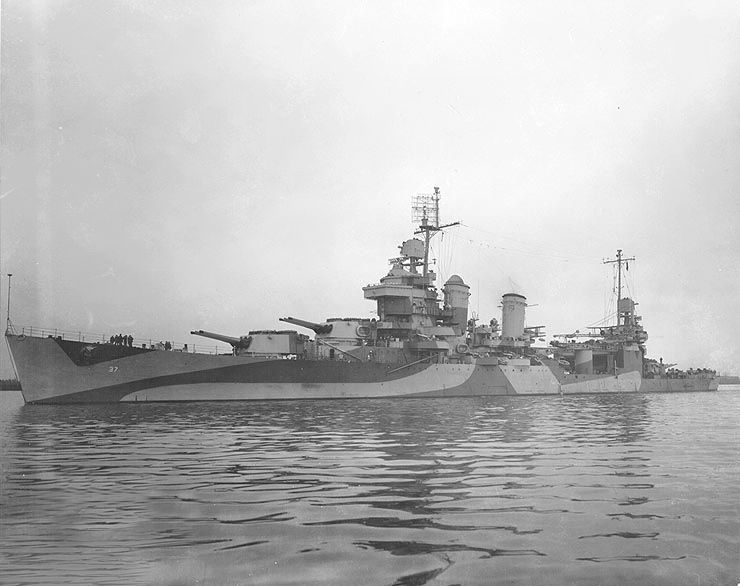
The USS Tuscaloosa fired on German positions in Saint-Laurent-sur-Mer, including the church steeple used as an observation post. That naval support made a big difference in knocking out German strongpoints.
Many of the Americans who died during the invasion now rest at the nearby American Cemetery, where almost 10,000 servicemen are buried—a powerful reminder of what was lost here.
British and Canadian Operations
British troops landed at Gold Beach to the east, and Canadian troops hit Juno Beach. Their landings were timed with the American assault to keep maximum pressure on German defenses.
The British 50th Infantry Division captured key objectives on D-Day, including Bayeux. Canadian forces pushed further inland than many other Allied units on the first day.
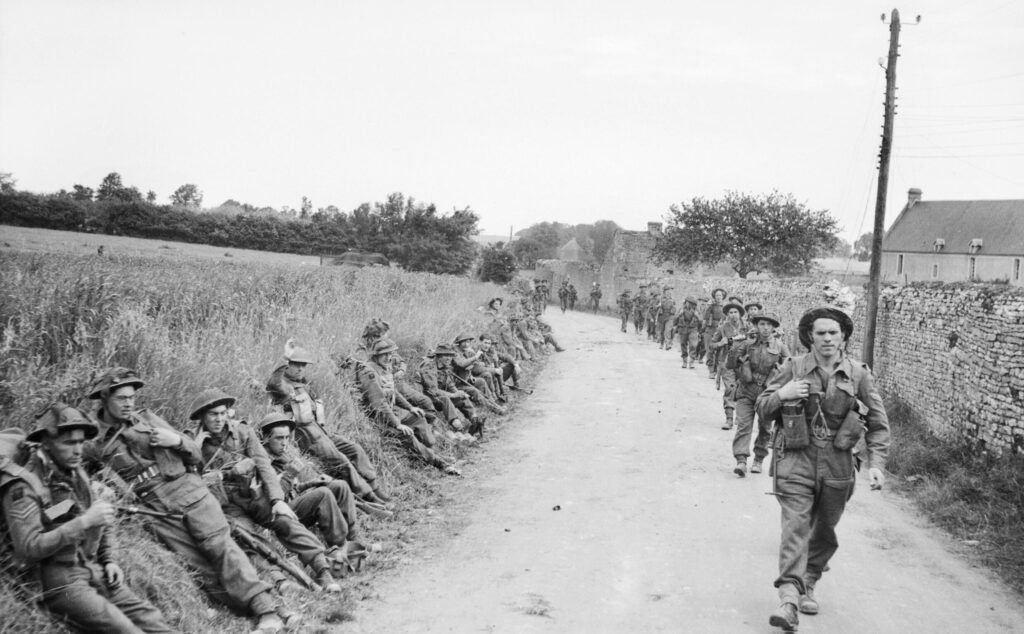
British naval vessels, like HMS Belfast, bombarded coastal defenses before and during the landings, helping to soften up German positions.
Commonwealth soldiers who died in Normandy are honored in cemeteries maintained by the Commonwealth War Graves Commission—beautiful, peaceful places for remembrance and reflection.
Paratroopers and Airborne Troops
The 82nd and 101st Airborne Divisions parachuted behind enemy lines hours before the main landings. Their job was to secure bridges, crossroads, and causeways to block German reinforcements from reaching the beaches.
Even though poor weather and anti-aircraft fire scattered many paratroopers, they still managed to pull off a lot of their objectives. Their efforts confused German commanders about where the invasion was really happening.
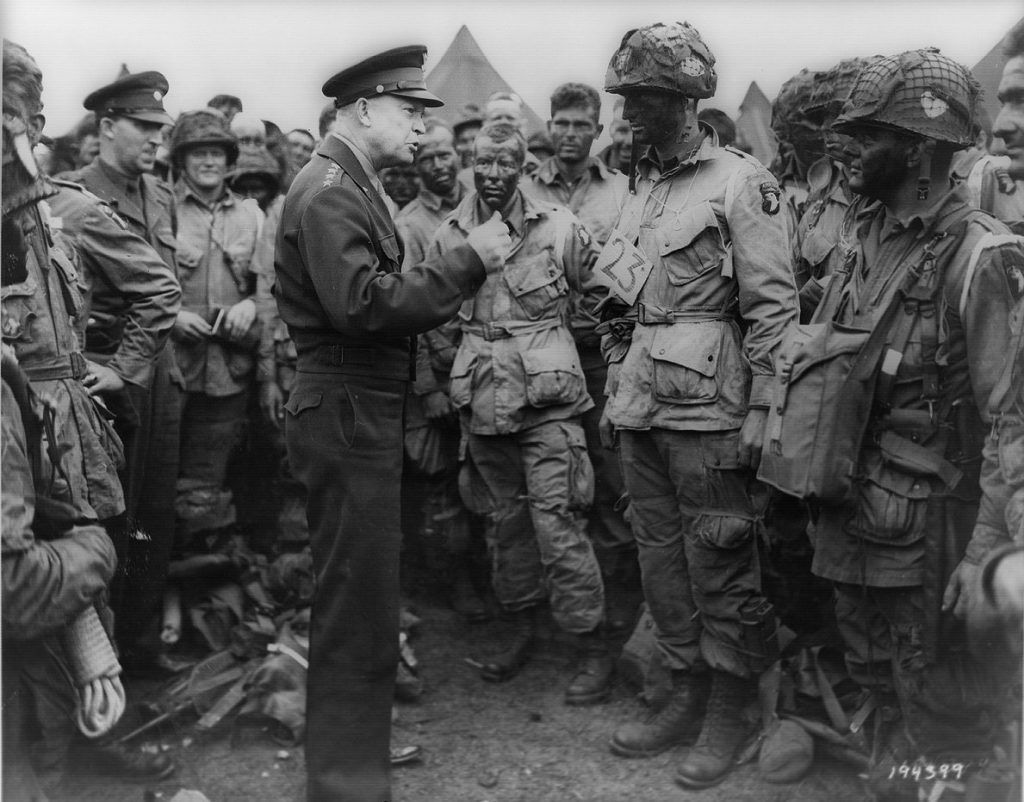
The 101st Airborne secured exits from Utah Beach, while the 82nd blocked routes into the invasion area. These night drops were some of the riskiest missions of D-Day.
Today, you’ll find memorials to these airborne troops all over the region around Saint-Laurent-sur-Mer. Their role was absolutely vital to the overall success of Operation Overlord.
French Resistance and Local Support
The French Resistance gathered critical intelligence about German defenses before D-Day. These civilians risked everything to track troop movements and report on fortifications.
The night before the invasion, resistance fighters sabotaged rail lines, cut phone wires, and attacked German patrols. Their actions disrupted enemy communications at a crucial moment.
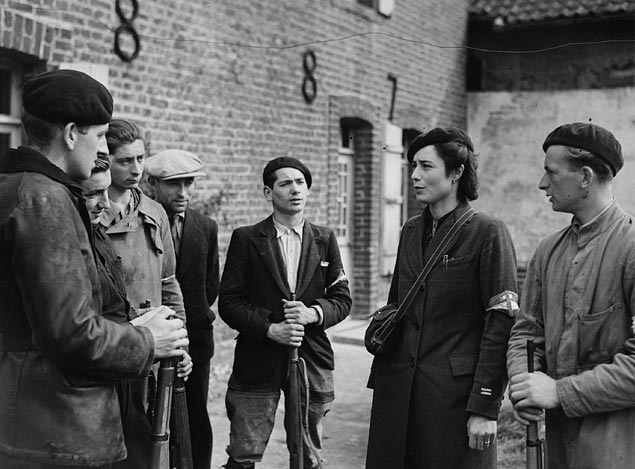
Local residents sometimes sheltered downed Allied airmen or escaped prisoners. After the landings, many Normans helped the Allies with their knowledge of the area.
Today, Saint-Laurent-sur-Mer honors the partnership between Allied forces and French civilians. D-Day anniversary celebrations highlight the strong ties between the United States, France, and other European allies—a bond that’s still going strong.
Defensive Structures and the Atlantic Wall
The Normandy coast bristled with defenses as part of Hitler’s Atlantic Wall. These military installations shaped the outcome of the D-Day landings, and you can still spot some of them in Saint-Laurent-sur-Mer today.
Find the perfect base for exploring Utah Beach, Pointe du Hoc, and beyond.
German Fortifications on the Normandy Coast
Between 1942 and 1944, Nazi Germany built the Atlantic Wall—a vast network of coastal defenses. Around Saint-Laurent-sur-Mer, German forces set up concrete bunkers, gun emplacements, and all sorts of obstacles along what we now call Omaha Beach.
Some of the main features included:
- Widerstandsnester (resistance nests) – Small, tough defensive positions
- Concrete casemates – These held artillery pieces pointed right at the sand
- Machine gun nests – Placed to cover the landing zones as much as possible
- Anti-tank walls – Barriers meant to stop vehicles from getting through
- Beach obstacles – Metal “hedgehogs” and wooden stakes scattered along the shoreline
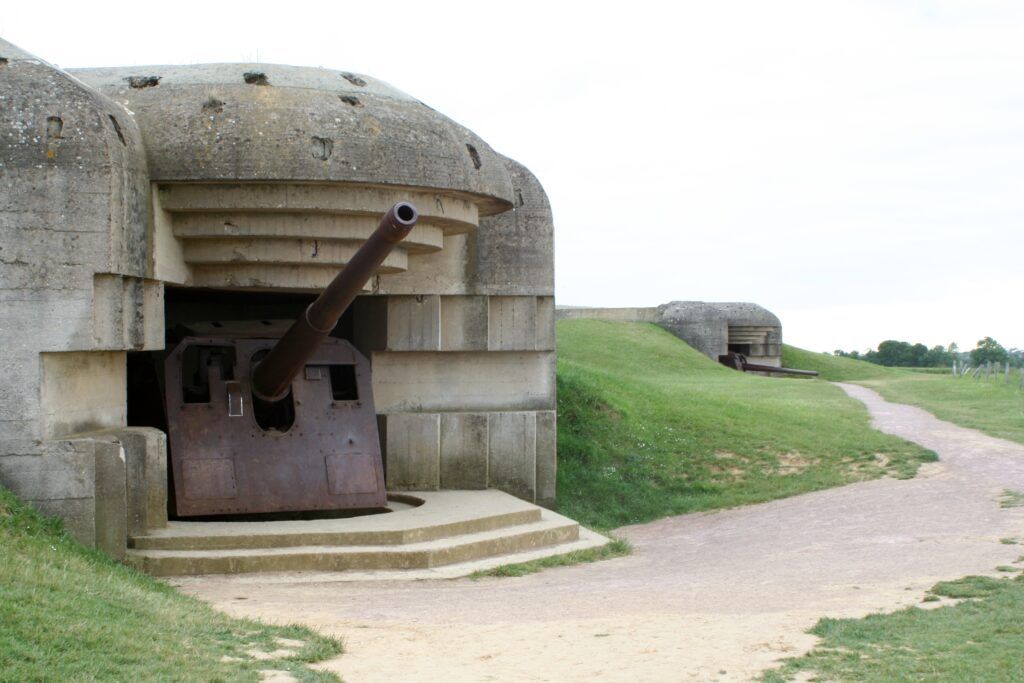
German engineers designed these defenses to stop any Allied invasion cold. At Saint-Laurent-sur-Mer, WN-64 (Widerstandsnest 64) stood out as one of the strongpoints that inflicted serious casualties on American troops during the first waves of D-Day.
Remnants in Saint-Laurent-sur-Mer Today
Even after post-war cleanup, you’ll still find several concrete structures scattered along Omaha Beach near Saint-Laurent-sur-Mer. These silent relics now have protected status as historical monuments.
It’s possible to step inside a few well-preserved bunkers and imagine what American soldiers faced on June 6, 1944. Some still bear scars from the fighting—pockmarks, craters, and all.
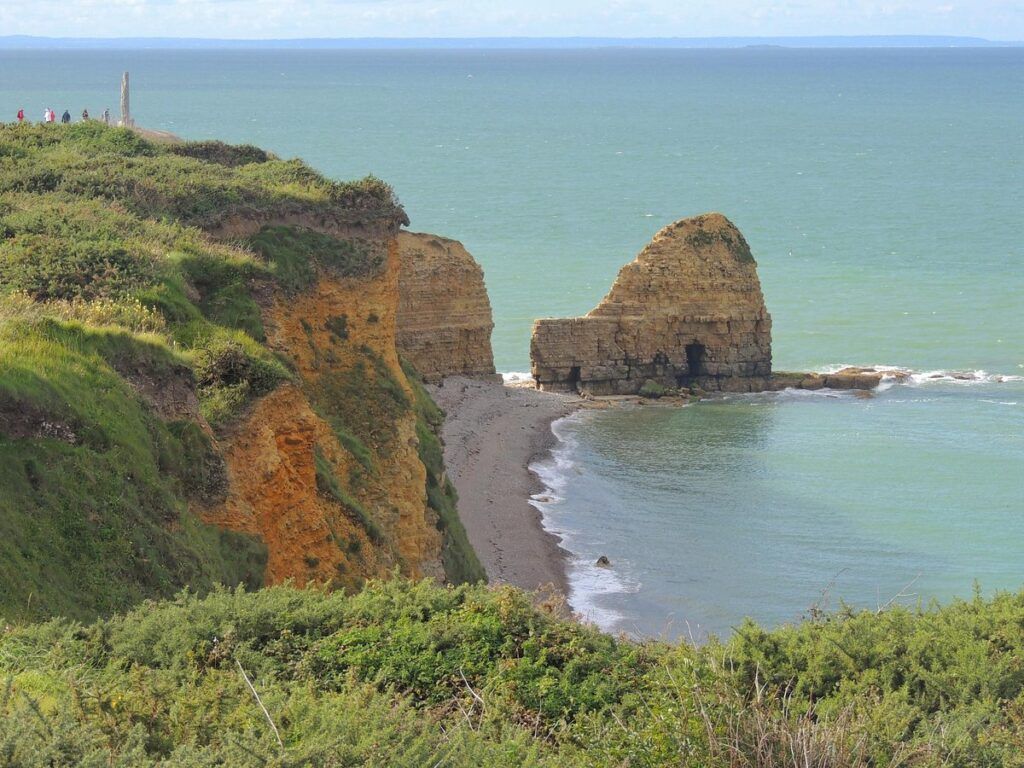
The most striking remnants:
- Concrete casemates, half-buried in the dunes
- Old gun positions looking out over the water
- Stretches of anti-tank wall, battered by time
Local museums add context with maps showing where the defenses used to be. Information panels near the big bunkers explain their military role during the Battle of Normandy.
Visiting these sites really drives home the challenges the Allies faced during the invasion. Standing in a bunker, you get a sense of the sheer scale of what happened here—one of history’s most pivotal military moments.
Other Notable Normandy Beaches and Locations
Of course, Saint-Laurent-sur-Mer and Omaha Beach get much of the attention, but several other beaches and sites played big roles in the Allied invasion. Each offers its own angle on the operation that helped free Europe.
Utah Beach and Gold Beach
Utah Beach lies at the western edge of the landing zones. American troops landed here and, thankfully, suffered fewer casualties than at Omaha. Today, you’ll find the Utah Beach Museum, complete with a restored B-26 Marauder and a trove of vehicles and weapons.
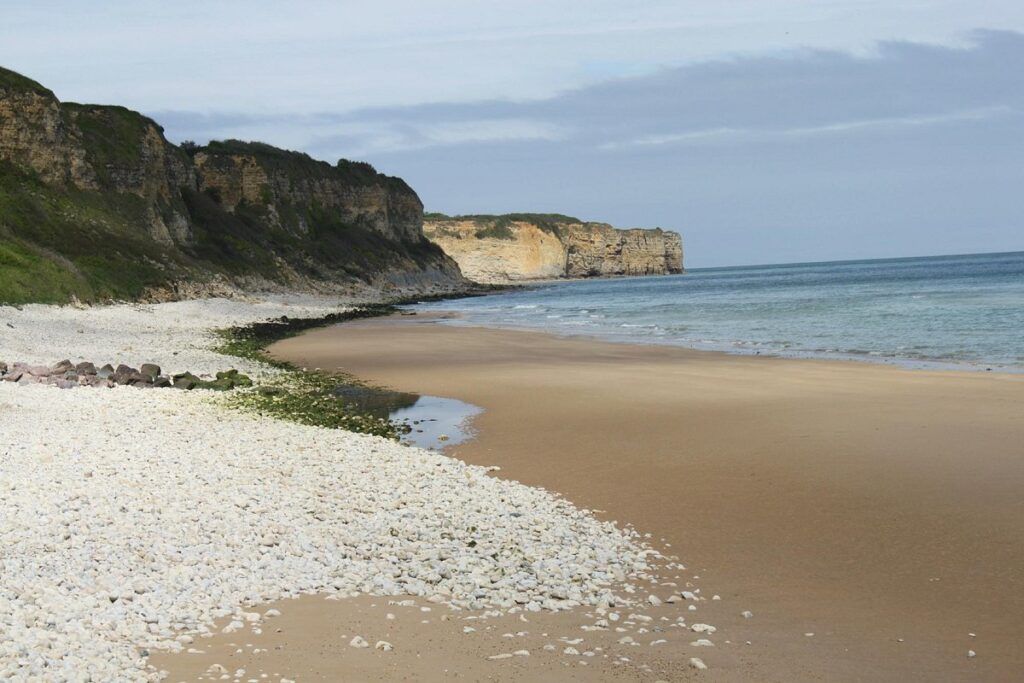
Gold Beach stretched for about 8 kilometers, from Port-en-Bessin to La Rivière. British forces took this sector on D-Day, capturing several towns along the way. The beach feels quieter now, but you’ll spot monuments and information boards scattered around.
If you’re planning a visit, figure on about two hours per site. Both spots have cafes and visitor amenities. It’s interesting to compare Utah’s American focus with Gold’s British perspective—it really highlights the teamwork behind the Allied effort.
Juno Beach and Pegasus Bridge
Juno Beach was where Canadian forces landed, facing tough German resistance. The Juno Beach Centre at Courseulles-sur-Mer stands as Canada’s D-Day museum, with modern exhibits telling the story of the 14,000 Canadians who landed here.
Pegasus Bridge, spanning the Caen Canal, was snatched by British airborne troops in a gutsy glider assault. You can see the original bridge at the Pegasus Memorial Museum, along with a Horsa glider replica.
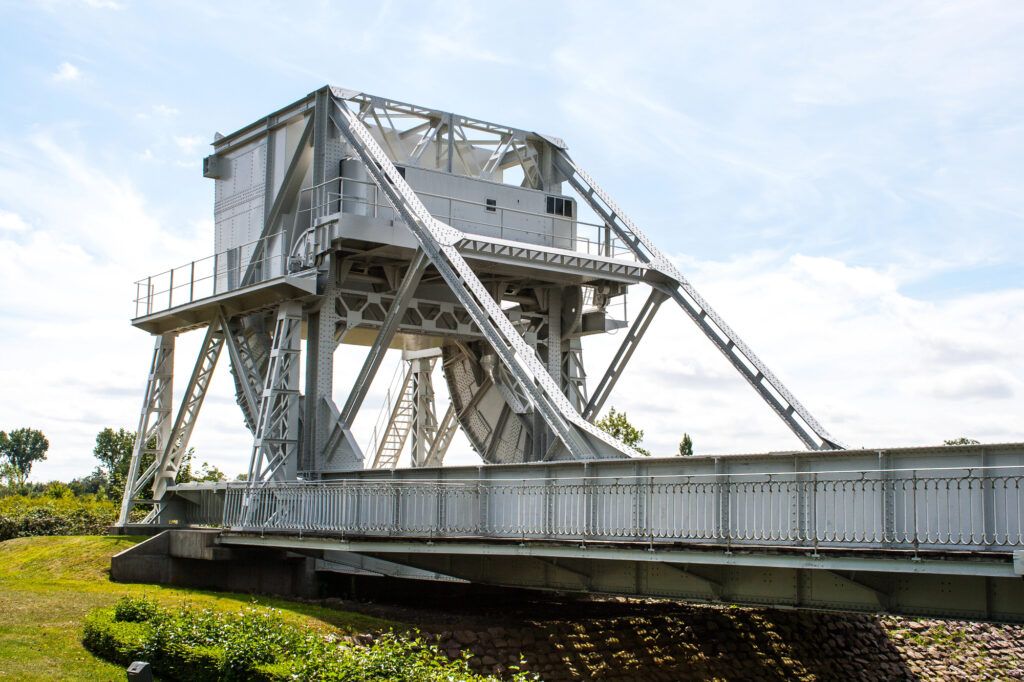
At Juno, keep an eye out for old German bunkers along the sand. Over at Pegasus Bridge, Café Gondrée is worth a stop—it was the first house liberated during the invasion and, remarkably, is still run by the same family. Both sites tend to be less crowded than the American beaches, but they’re just as moving.
Pointe du Hoc and Colleville-sur-Mer
Pointe du Hoc stands out for its sheer cliffs—U.S. Rangers scaled these 100-foot heights to silence German guns. The ground is still cratered from bombing, and you can wander through several battered bunkers. What the Rangers pulled off here? Pretty incredible.
Colleville-sur-Mer holds the American Cemetery, where 9,387 U.S. soldiers are buried. The cemetery overlooks Omaha Beach, forging a powerful link between the battlefield and those who fell.
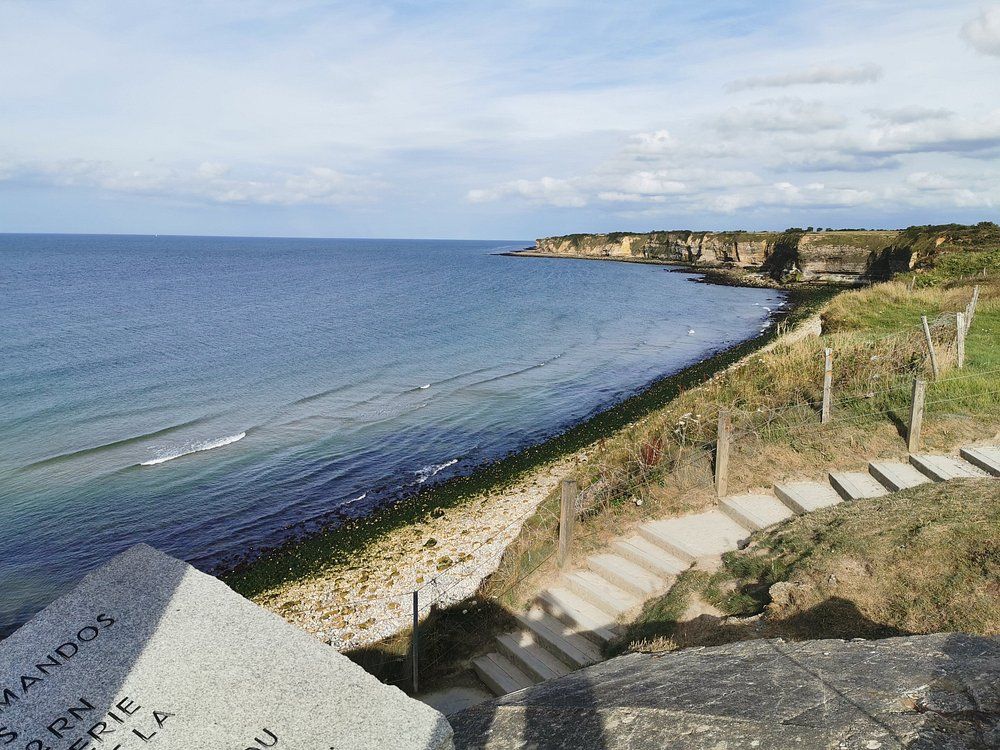
Give yourself at least an hour at Pointe du Hoc to explore the craters and bunkers. For the cemetery, you’ll want 1–2 hours to see the graves, the memorial, and the visitor center. Both places are free, but it’s smart to check opening hours, since they can shift with the seasons.
Merville Battery and Nearby Villages
The Merville Battery was a tough German gun site targeted by British paratroopers. Even after losing most of their gear, they managed to capture it in a gutsy pre-dawn attack. Today, you can walk through the restored bunkers and take in multimedia exhibits that bring the battle to life.
Nearby villages like Arromanches and Bayeux offer more ways to see the story. Arromanches still has pieces of the artificial Mulberry Harbor, and Bayeux’s Memorial Museum of the Battle of Normandy is a must if you’re keen on history.

For the Merville Battery, wear shoes you don’t mind getting dirty—there’s plenty of uneven ground and bunkers to explore. The site feels authentic, with original guns and equipment on display. Lots of folks pair this stop with a visit to Bayeux, which was the first major town liberated after D-Day and, somehow, avoided major damage during the fighting.
Find comfortable stays within moments of historic battlegrounds
Commemorations, Ceremonies, and Annual Events
Saint-Laurent-sur-Mer holds several commemorations each year to honor those who fought and died during the D-Day landings. These gatherings bring together veterans, families, and visitors in remembrance.
D-Day Anniversary Celebrations
June 6th marks the biggest event on Saint-Laurent-sur-Mer’s calendar. Each year, thousands gather on Omaha Beach for ceremonies that start around 10:30 AM. You’ll spot international dignitaries, military reps, and plenty of civilians paying their respects.
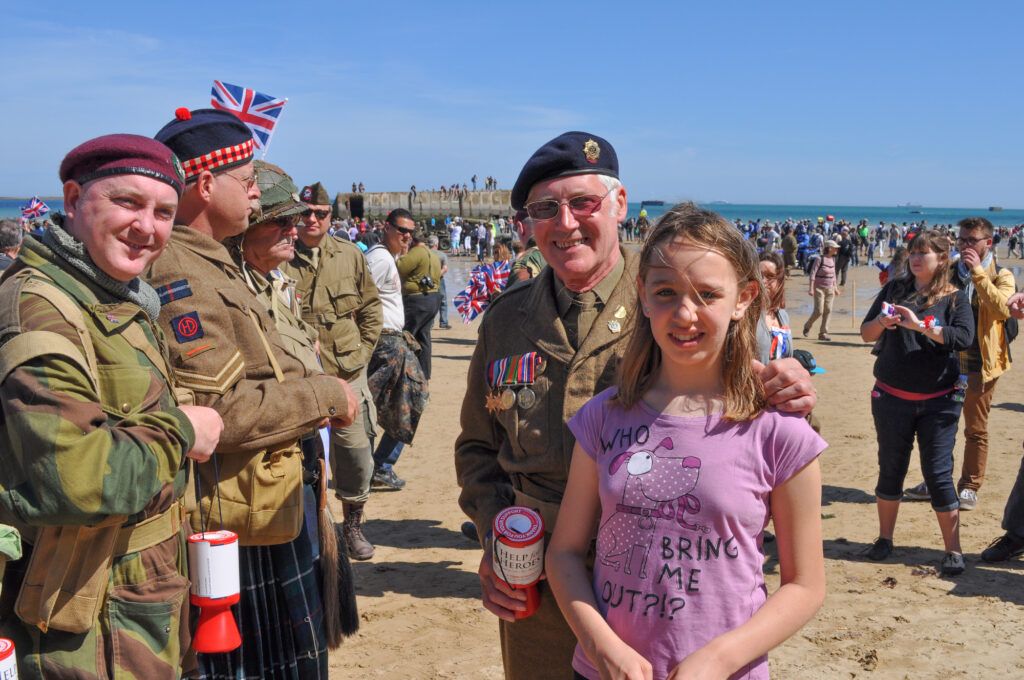
Throughout the day, you might catch:
- Flag-raising at sunrise
- Military bands playing
- Historical reenactments
- Wreath-laying at memorials
- A moment of silence at 3:00 PM
Every five or ten years (like the 80th in 2024), the events get even bigger—think special exhibits, parades, and fireworks lighting up the beach at night.
Veteran and Tribute Events
All year long, Saint-Laurent-sur-Mer hosts smaller but meaningful tributes. The “Remember Our Heroes” ceremony in September highlights specific units that fought on Omaha Beach.
Veterans who return to visit get a warm welcome. Local families sometimes “adopt” visiting vets, showing real gratitude for their sacrifice. Schools often invite veterans to speak with students, giving the younger generation a chance to hear history firsthand.
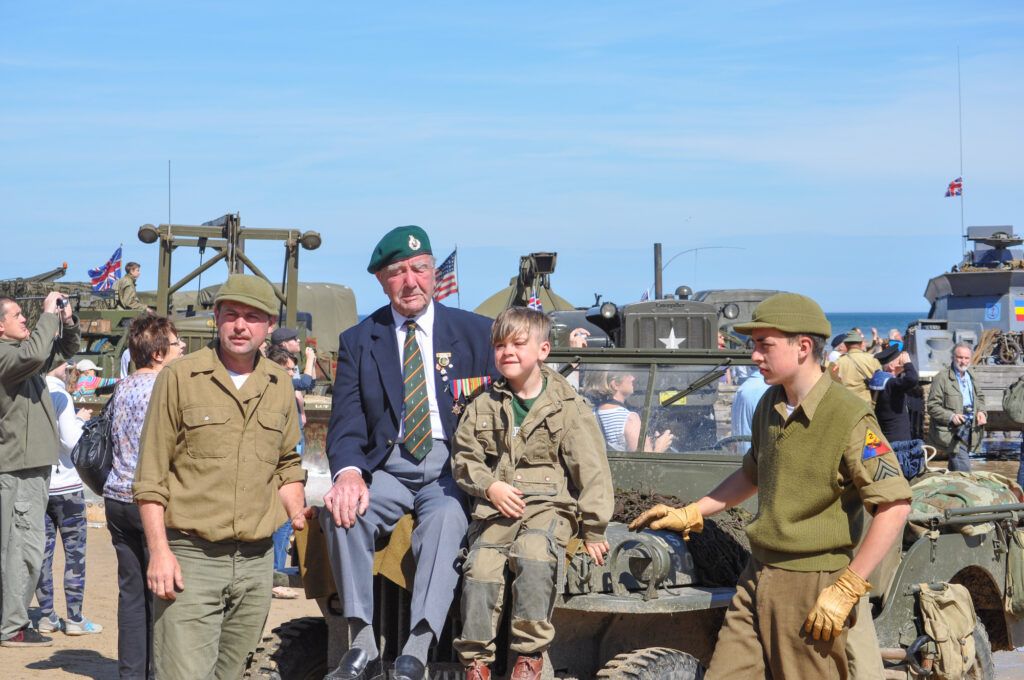
In November, the “Peace Torch” ceremony brings a candlelit procession from the town center to the beach—a moving reminder of the ongoing hope for peace and the cost of war.
For up-to-date details, check the town’s website or stop by the tourist office for the latest schedule of commemorative events.
Present Day Visitor Information
Saint-Laurent-sur-Mer mixes deep history with a bit of coastal charm. Travelers can walk the D-Day beaches and then unwind in the peaceful Norman countryside—maybe with a good local meal to cap it off.
From beachfront hotels to authentic French countryside stays. No booking fees.
Getting to Saint-Laurent-sur-Mer
The town sits in Normandy’s Calvados region, about 260 km northwest of Paris. If you’re driving, just hop on the A13 toward Caen, then follow the D6 and D514 along the coast. You’ll get there in around three hours, give or take.
Public transport isn’t great. The closest train station is Bayeux (20 km away), which connects to Paris. From Bayeux, you’ll need a taxi or local bus to reach Saint-Laurent-sur-Mer.
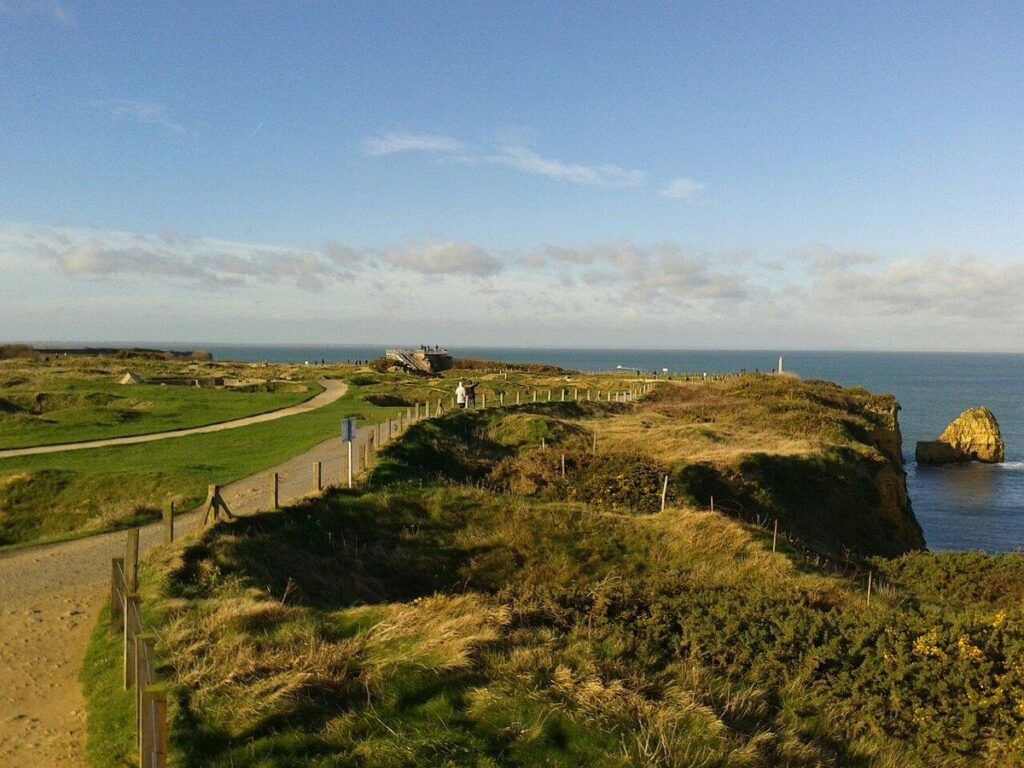
Lots of folks join organized day trips from Paris or Bayeux. These tours usually cover transportation and bring you to Omaha Beach and other D-Day sites with a guide.
If you want to set your own schedule, renting a car is your best bet.
See available accommodations near Saunt-Laurent-sur-Mer.
Local Accommodations and Dining
Saint-Laurent-sur-Mer has a handful of cozy places to stay. You’ll find some small hotels and B&Bs in town, with more options in Bayeux or Port-en-Bessin.
Some favorites:
- Family-run guesthouses a short walk from Omaha Beach
- Vacation rentals offering sea views
- Farm stays just outside town, surrounded by fields
See available accommodations near Saunt-Laurent-sur-Mer.
For food, local spots serve up Norman classics—think fresh seafood, apple-based dishes, and regional specialties like Calvados (the apple brandy) and Camembert cheese.
Cafés near the beach offer simple meals and drinks for folks exploring the D-Day sites. If you’re after more variety, Bayeux and Port-en-Bessin have plenty of restaurants to choose from.
Guided Tours and Educational Experiences
The Maison de la Libération in Saint-Laurent-sur-Mer gives visitors an immersive look at history. The museum recreates 1944 scenes with original materials, so you get a sense of what daily life was like during the liberation.
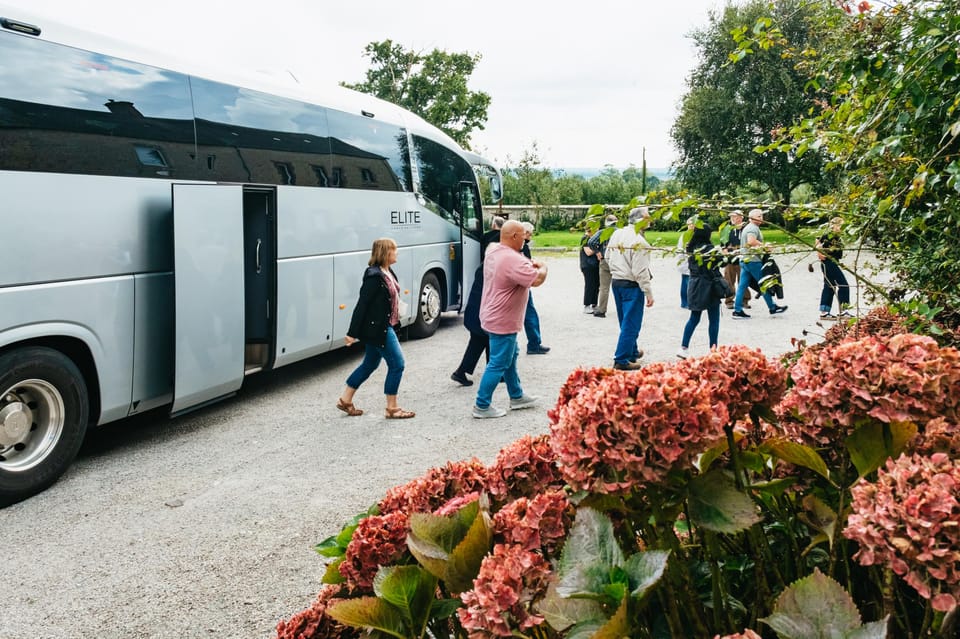
Professional guides run specialized D-Day tours, taking you to the key sites along Omaha Beach and the American Cemetery in Colleville-sur-Mer, and filling in the stories behind what you see.
If you can’t make it in person (or just want a preview), virtual tours are available too.
For a deeper dive, consider:
- Walking tours along the landing beaches
- Museum visits featuring personal D-Day stories
- Guided trips through German bunkers
- Attending memorial ceremonies—especially around June 6th
Some guides even have family ties to D-Day, so you might hear a few unique stories you won’t get anywhere else.
See available accommodations near Saunt-Laurent-sur-Mer.
Recommended D-Day Tours:
- American D-Day Sites in Normandy Full-Day Tour
- American D-Day Sites in Normandy Half-Day Tour
- Half-Day Normandy WWII Sidecar Tour
- Full-Day US Battlefields of Normandy Tour
Get a discount of 15% to 70% on Saint-Laurent-sur-Mer accommodations and tours! Look for deals here:
Saint-Laurent-sur-Mer Hotels and Tours

